13 Things to Do in Lublin Poland

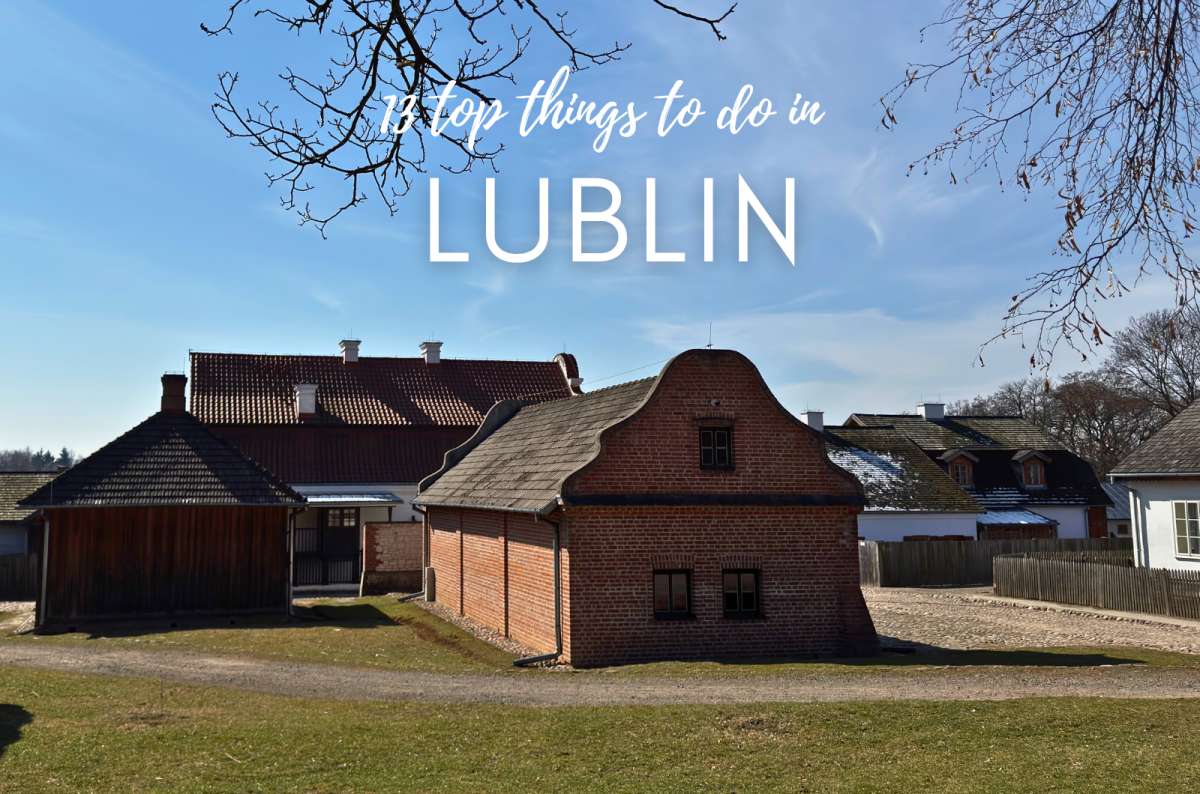
What are the main things to do in Lublin, Poland? I mean, is Lublin even worth visiting? For many travelers, that’s the million-dollar question when planning a Poland itinerary.
Lublin is a mid-sized city with about 350,000 inhabitants in eastern Poland. It is strongly connected to the history of Polish Jews, and therefore some of the main sights are related to Jewish heritage or concentration camps, such as Majdanek.
I visited Lublin in March 2025. I had never heard of the city before, but when I planned my Poland itinerary, I knew I needed to include it. It seemed so different from other Polish cities, with its distinct culture and history.
I spent about a week in Lublin and the surrounding area, and a total of six weeks in Poland across multiple trips. Would I go to Lublin again? For me, the answer is an easy yes.
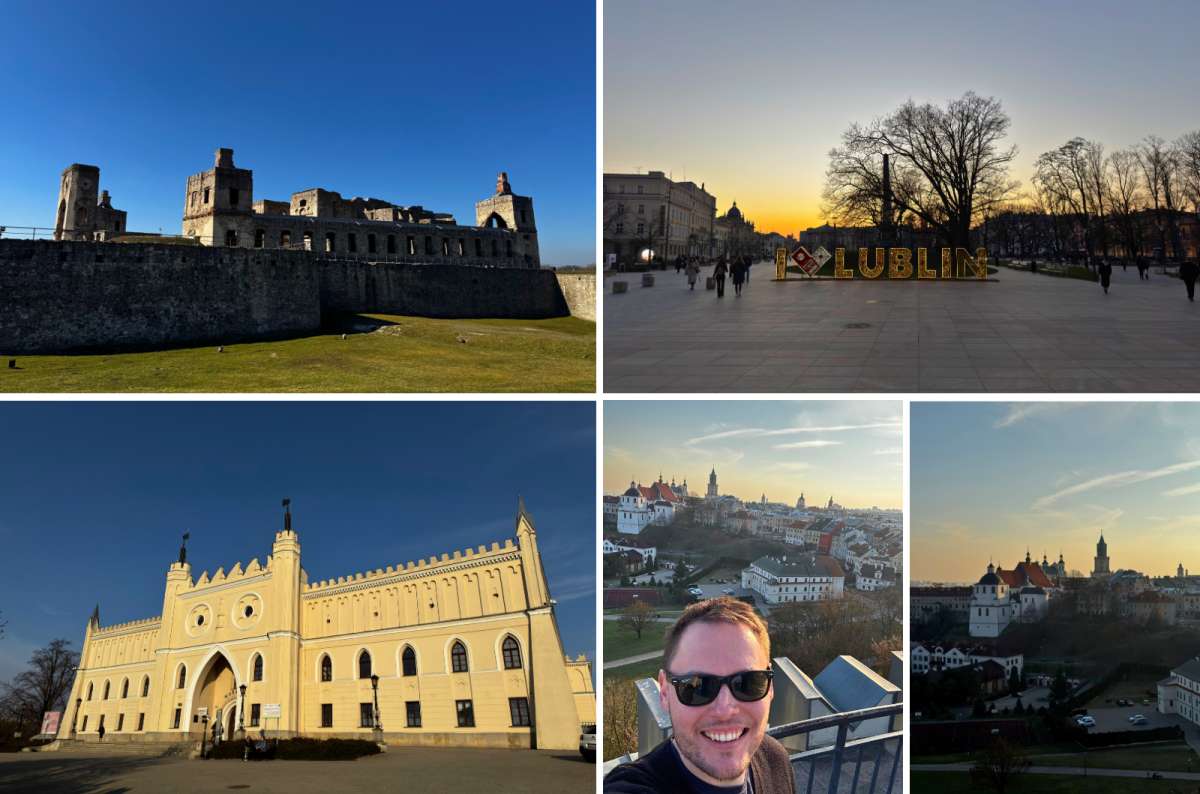
There’s so much that the area has to offer
The city offers a nice blend of modern and old, and it is much more developed than I expected. Its Renaissance architecture in the center is beautifully preserved, unlike many other Polish cities that were heavily damaged in World War II.
Lublin also has deep connections to local Jewish communities, and many visitors come here for this history. I was surprised by how many tourists I saw, even in the off-season.
Lublin stands out as one of Central Europe’s most beautiful cities, known for its historical charm and vibrant atmosphere, making it a must-visit destination in Poland.
Read on for practical information and my honest, fluff-free opinions on 11 popular things to see and do in Lublin, plus two bonus day trip options.
I’ve also included a city map, general travel tips, and a one-day itinerary—because that’s really all you need to see the highlights. And if you’re staying longer, the day trip ideas will definitely come in handy!
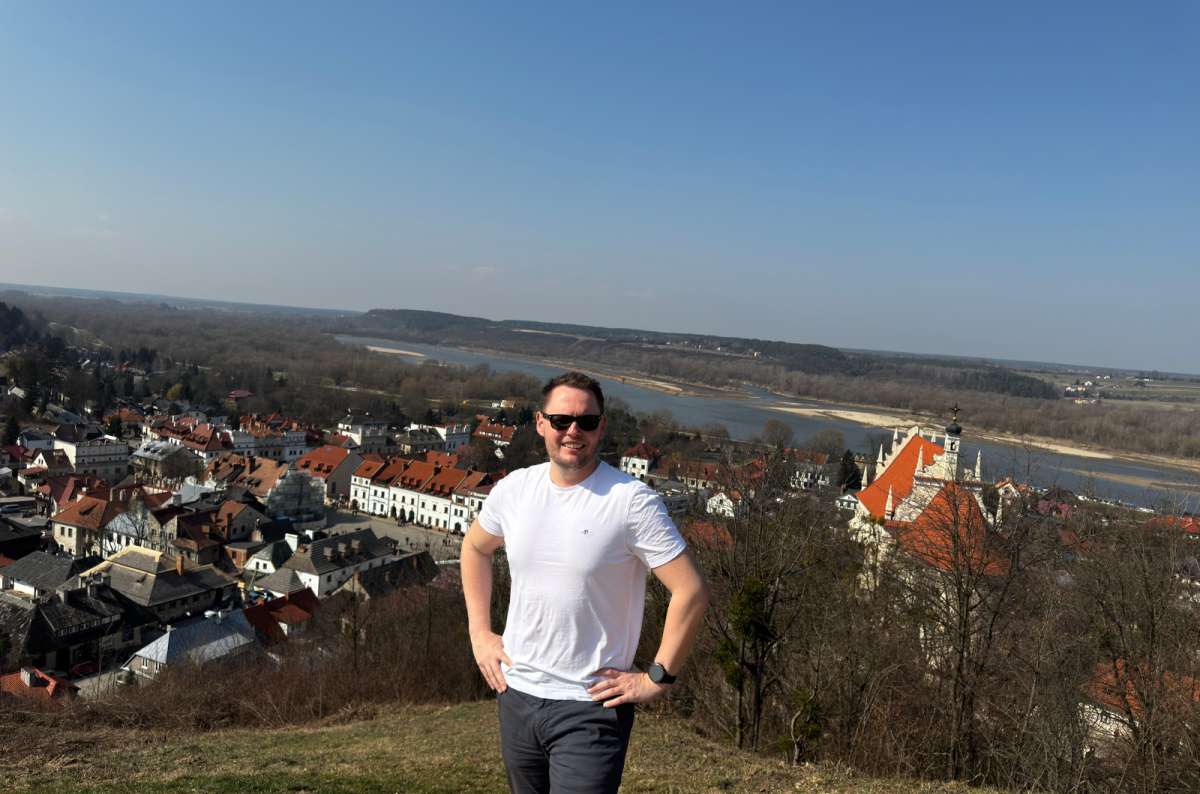
These are the sights you too can enjoy if you follow my guide @ Kazimierz Dolny
My ranking of the best things to do in Lublin Poland
- Majdanek Concentration Camp: Best preserved camp in Poland
- Lublin open-air museum: Experience the charm of a provincial town with historical buildings and rural atmosphere. The museum is open year-round.
- Lublin Castle: The best views in Lublin and home to a branch of the National Museum, showcasing important artifacts and artworks.
- Market Square: The historic center of Lublin's Old Town, surrounded by notable buildings and the Gothic Crown Tribunal, a key landmark and former court of appeal.
- Grodzka Gate: A notable historic gateway with cultural significance, serving as a symbol of remembrance and a connection to Lublin's Jewish heritage.
- Historical center: Simply walk through Lublin's historical part to enjoy its unique atmosphere, architecture, and vibrant street life.
- Center for Culture: A lively venue for exhibitions, concerts, and performances showcasing Lublin’s creative side.
- Krakow Gate: A 14th-century tower with stunning views and a clear contrast between old and new Lublin.
- Multimedia fountain: Located in Litewski Square, a central public space with multimedia shows, monuments, and numerous benches for relaxation.
- Basilica of St. John: Known for its black altar and richly painted interior—one of Lublin’s most photogenic spots.
- DAY TRIP: Kazimierz Dolny: A charming riverside town full of art, history, and scenic views.
- DAY TRIP: Sandomierz and Krzystopor Castle: Explore a medieval town and the ruins of one of Poland’s grandest castles.
- Carnaval Sztukmistrzów: Experience this unique festival featuring modern circus, street art, and urban highline performances, held in various outdoor and indoor settings.
Sometimes, all you need to do is take the first step... I've filtered out the best hotels in Lublin for you
Save it for yourself to come back to later, or share with your friends on social media!
The city also offers a variety of cultural events, historical sites, modern amenities, and opportunities for residents and visitors alike.
City center map of Lublin with attractions
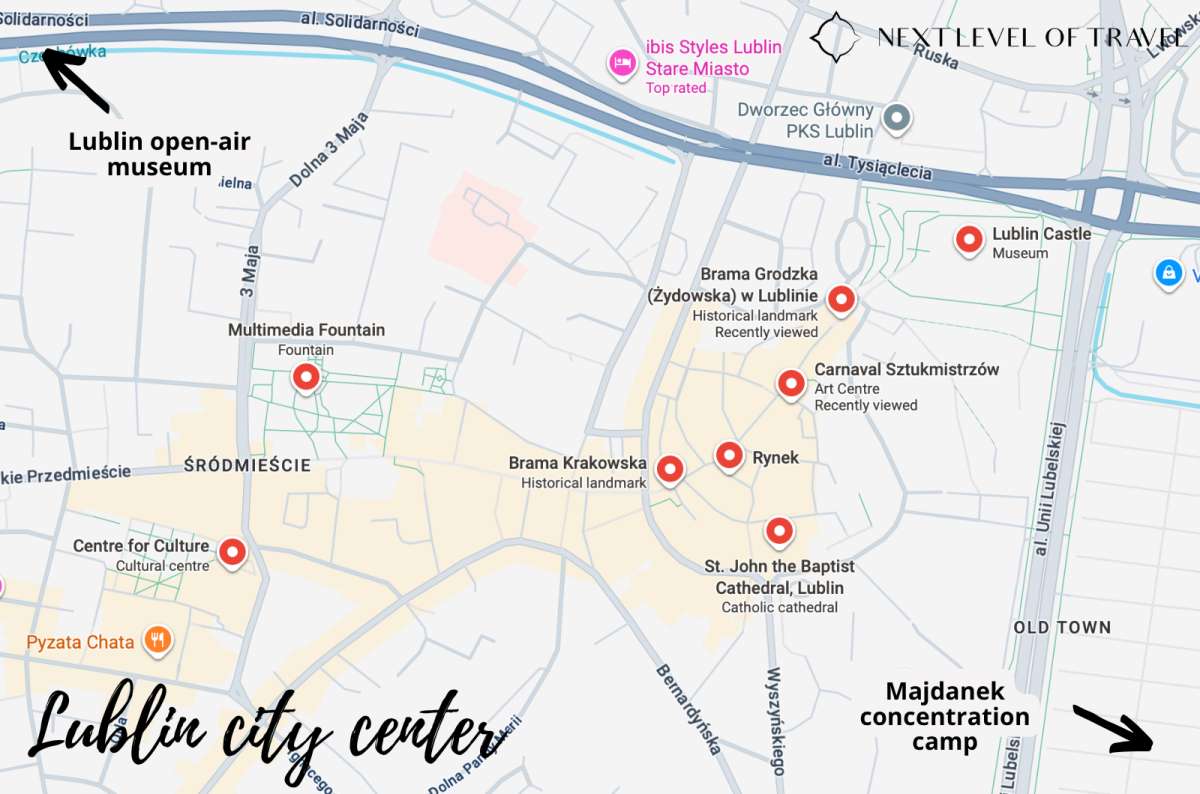
This map shows you all you need to successfully navigate the Lublin city center
Introduction to Lublin, Eastern Poland
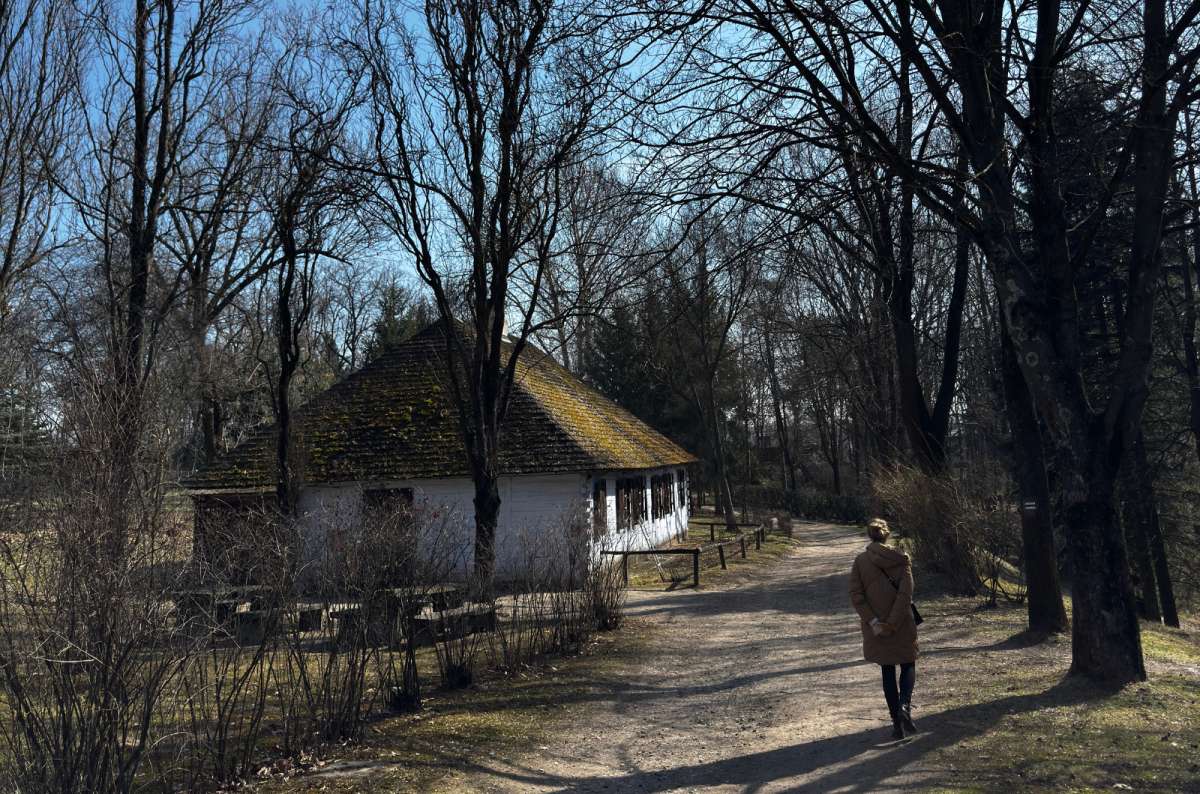
Outside of the city’s lovely atmosphere, you can also enjoy the delightful Skansen
If you’re looking for a city that perfectly blends a rich history with vibrant culture, Lublin in eastern Poland should be at the top of your list.
The city center is a real showstopper, with its well-preserved Old Town packed full of colorful tenement houses, winding cobbled streets, and lively market squares.
Walking through the Old Town, you’ll stumble upon architectural gems like the Lublin Castle, home to the fascinating Lublin History Museum, and the iconic Holy Trinity Chapel with its frescoes.
For those who love to dig deeper, the Lublin Underground Route offers a unique perspective on the city’s history, taking you beneath the surface to explore hidden tunnels and stories from medieval times.
The Lublin Museum is another highlight, showcasing everything from local art to the city’s role in Polish history. Whether you’re simply walking the old town center or venturing out to the castle, every corner of Lublin tells a story.
With its mix of historical sites, charming streets, and a welcoming atmosphere, visiting Lublin is a fantastic way to experience the best of eastern Poland.
Pro tip: I was surprised there were a lot of tourists even in March. So, reserve hotels as early as possible.
Hotel tip: Avatary Miasta is the hotel where I stayed, it has absolutely the best location, and also, there is not much to choose from in Lublin. Digital services such as online booking and Wi-Fi are available for travelers' convenience.
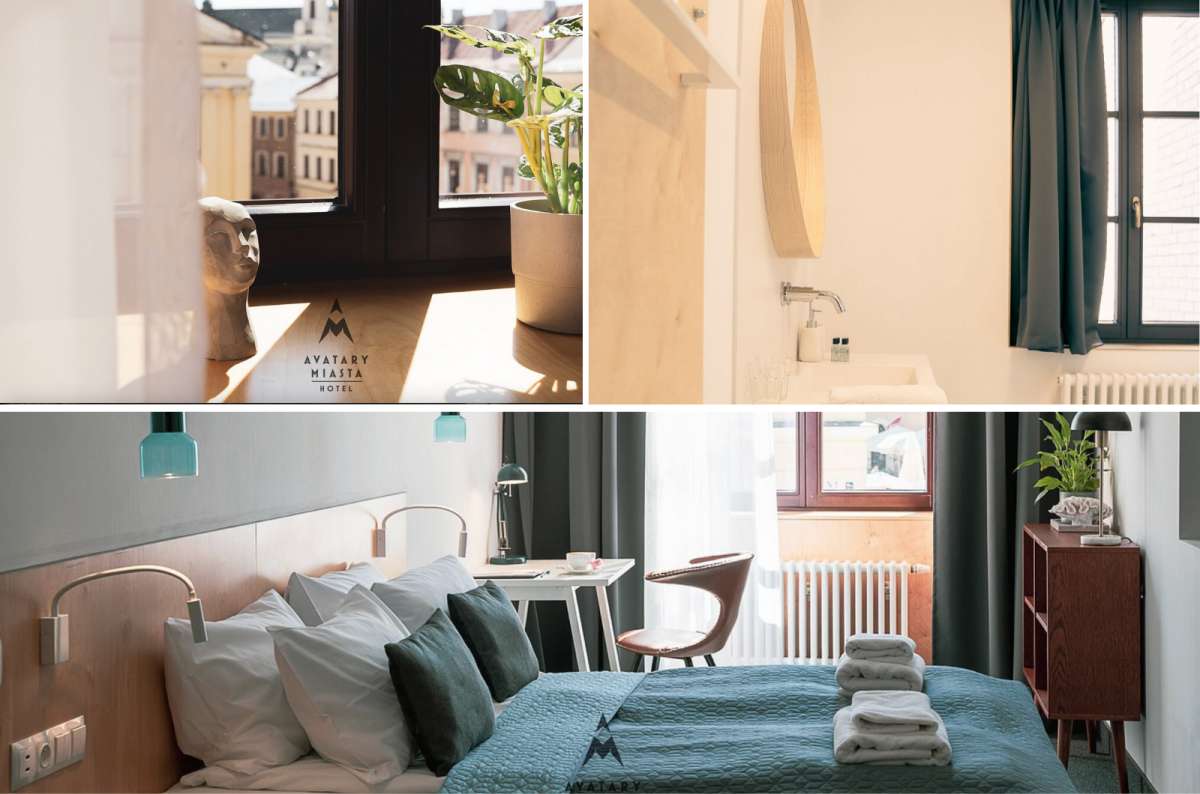
Avary Miasta hotel
If there is one thing to do in Lublin, visit the twisted history camps
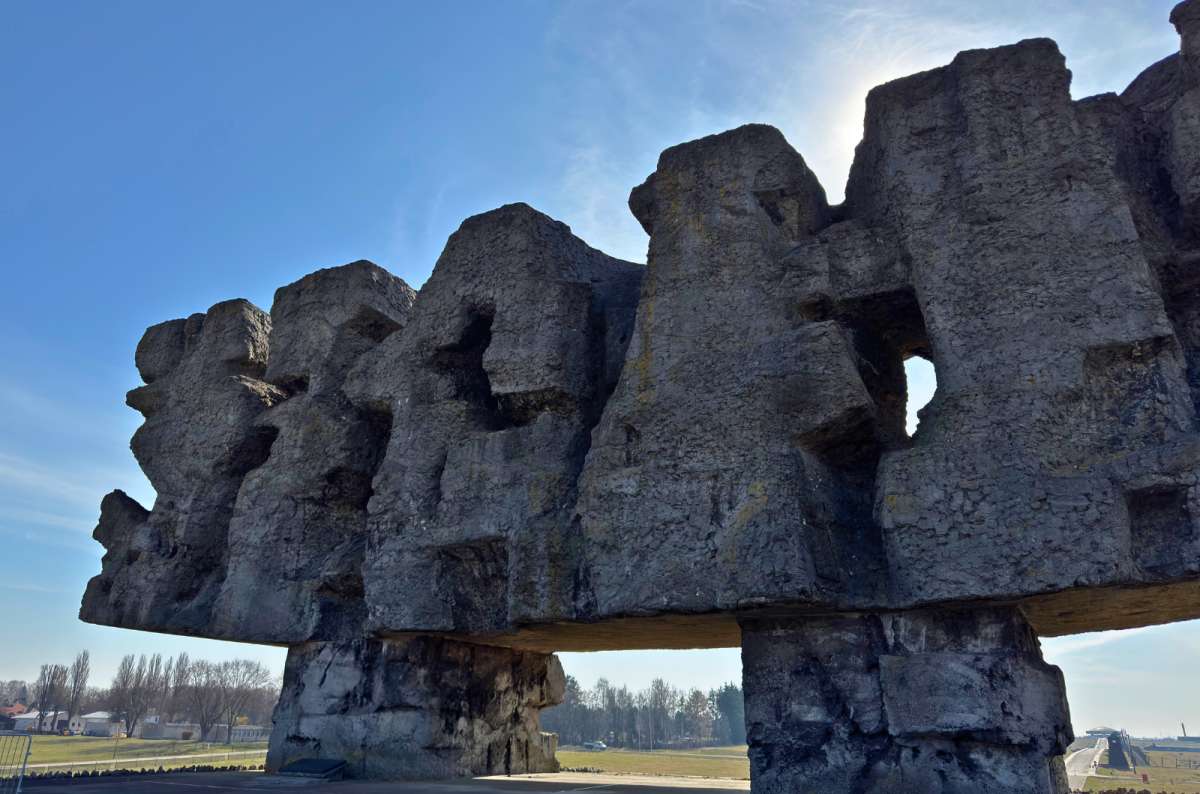
Majdanek concentration camp may not be the most pleasant visit, but it is something everyone should see
If you have only one thing to visit in Lublin, Poland, it is the Majdanek Concentration, Sobibor and Belzec Camps. You just have to visit Majdanek Concentration Camp.
I know it's horrid and brutal, but also by far one the best holocaust memorial in the world and the most preserved concentration camp in the world.
There are many more concentration camps around Lublin, as unfortunately, aside from Auschwitz-Birkenau, it was a spot of the mass killings. If you are really into this topic, you can explore it in other day trips from Lublin, as other main sites are:
-
Belzec Museum and Memorial (No survivors camp)
-
Museum of the Former Extermination Camp in Sobibor (Symbol of the possibility of escape)
I only visited Majdanek as I didn't have the nerve to visit more sites in such a short period of time. I keep it at about 1-2 concentration camps in each Poland visit.
Practical Information: Both sites are less than a 2-hour drive from Lublin. Both sites have easy parking and honestly, it's much less overcrowded than mentioned Auschwitz-Birkenau. Both sites are free.
And now let's go deeper into my list of the best things to do in Lublin and start with something more positive…well, starting with Majdanek Camp.. Damn Lublin.
1. Majdanek Concentration Camp
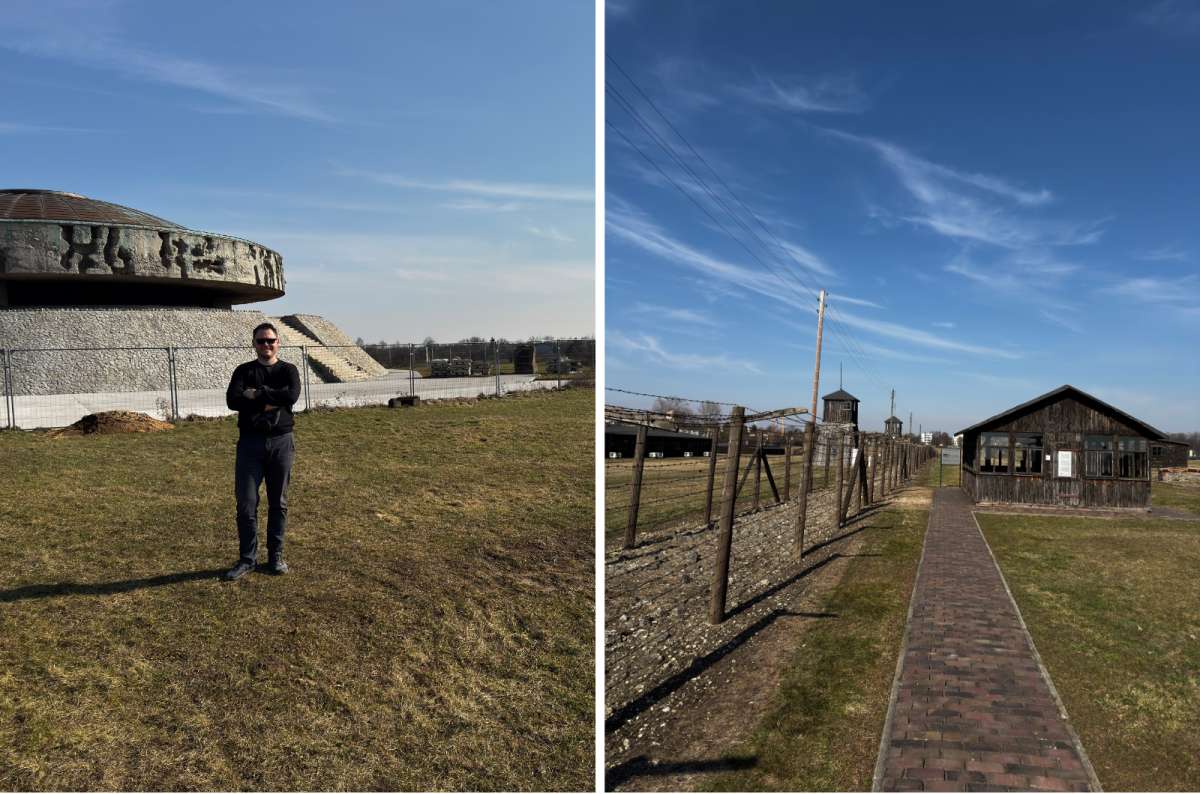
The barbed wires and simple houses at Majdanek still look almost brand new
Practical info:
- Opening hours: 9 am–6 pm,
- Price: free
- Parking: 10 zł and very spacious.
- Tour: Self-Guided, not advised for children under 14y (I can attest to it)
Majdanek is supposedly the best-preserved concentration camp, as it was among the first to be liberated.
It's so calm during the sunny day, and the number of visitors, even though big, is so dispersed that you truly feel alone. And a lot of Jews, obviously and understandably. It's interesting that the museum was opened even during WW2 in 1944.
Not Fun Fact (first time ever I’m using a Not Fun Fact): The selection process was mostly the same as in Auschwitz, fit for work or not. If not, then it was the end. Almost everyone was unfit.
Majdanek Concentration Camp Statistics
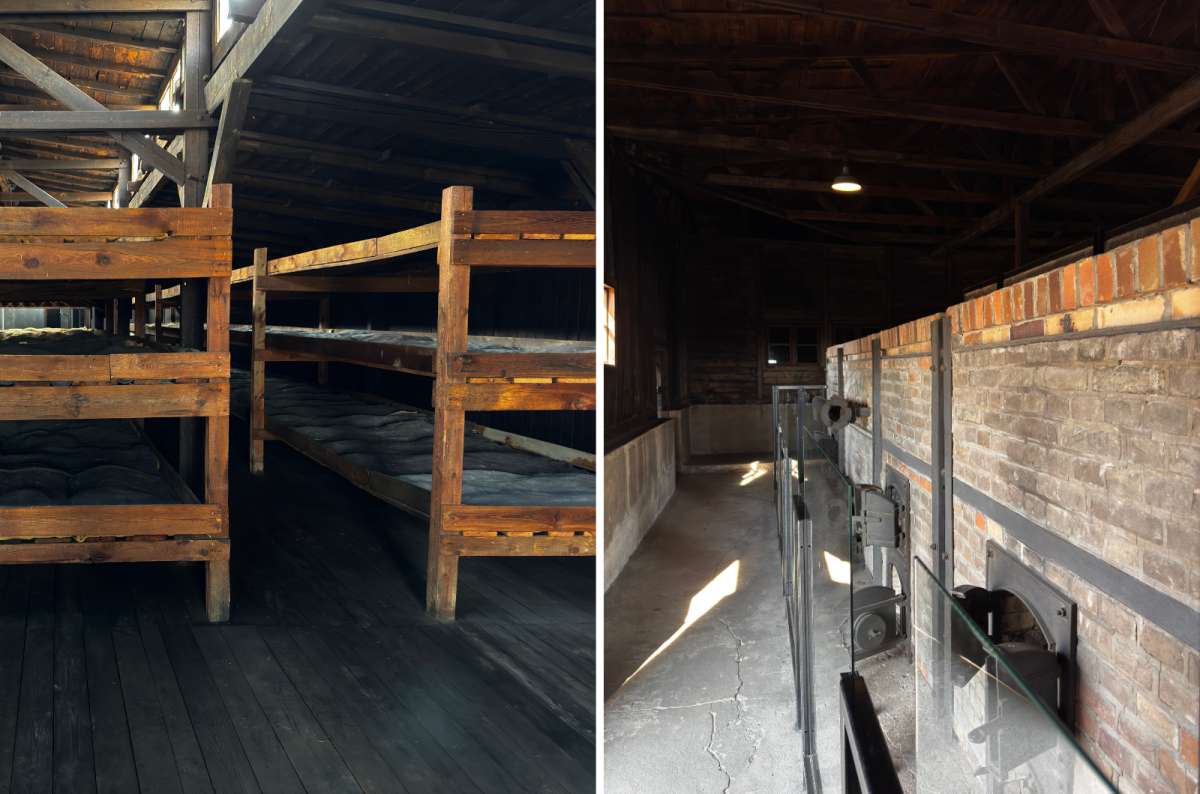
The housing and furnaces send chills down your spine
I love statistics, though not this one.
-
Some 80.000 people were murdered in Majdanek Concentration Camp, and only about 30% women were spared from gassing after entering the camp.
-
Interestingly enough, about 40% of Lublin population were Jews, and most of them were moved not to Majdanek, but to the extermination camp Belzec, which is about 150 km to the southeast.
-
From those people, almost none survived, as Belzec had by far the highest death ratio. The camp itself had 270,000 sq meters—it is unbelievably big.
-
On one day, there were 18.000 people shot as they needed more space for newcomers.
-
Each block was supposed to hold 250 prisoners, but sometimes held 500. For reference, each block is about the size of my apartment.
What to expect in Majdanek Concentration Camp?
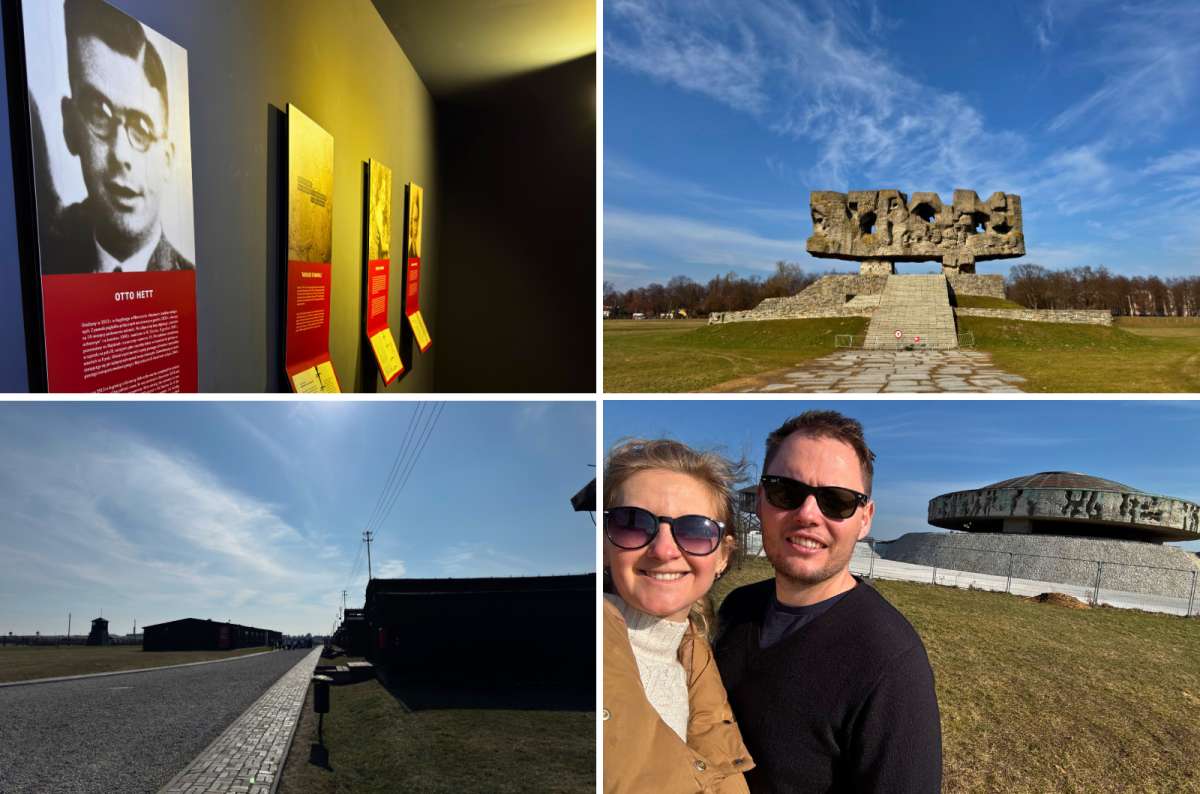
Majdanek was definitely a worthwhile experience
I suggest visiting in the morning, as there is a lot of information to take in. You’ll find many personal stories and a large area to cover on foot–I ended up walking about 8 km in Majdanek and spent around three hours there.
You can enter most of the buildings, such as the Reception House, which was used for disinfection with Zyklon B. Many of the barracks now contain exhibitions, and there are dozens of them to explore.
As you continue through the camp, you eventually reach the crematorium–quiet, well-preserved, and deeply haunting.
And last but not least, Majdanek has remarkably well-preserved gas chambers, something you cannot see as clearly anywhere else.
2. Lublin Outdoor Village Museum
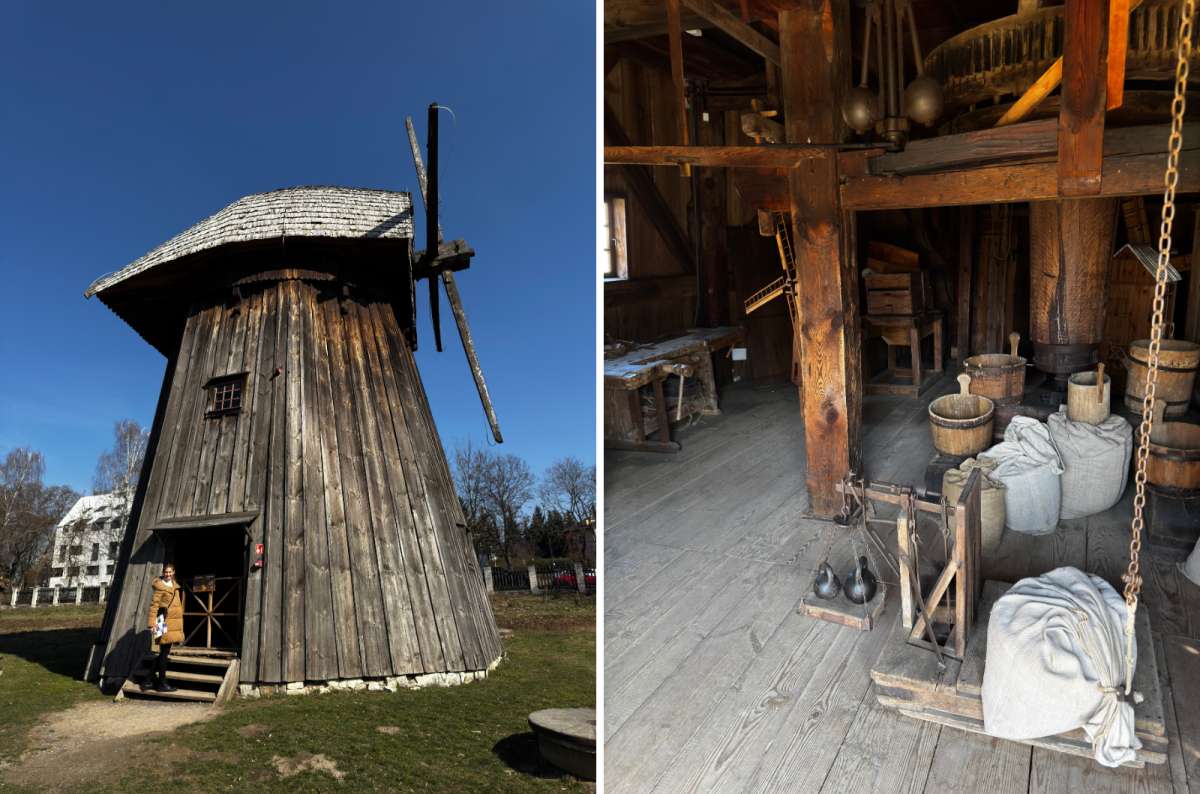
The mill in the Open-Air museum is just delightful
Practical information:
- Opening hours: 9 am–6 pm
- Price: 12 zł
- Parking: is free right in front of the open-air museum
The Open-Air Museum is the most cheerful and peaceful place I visited in Lublin, and I’d consider it the second-best thing to do in the city, right after Majdanek.
This large Skansen captures the charm of a provincial town, with traditional buildings and a rural atmosphere that recreates Polish village life from the 18th to the late 19th century. Most of the houses are originals, carefully moved here from different parts of eastern Poland.
The museum is open year-round, making it a great destination in any season.
How to navigate Lublin open-air museum?
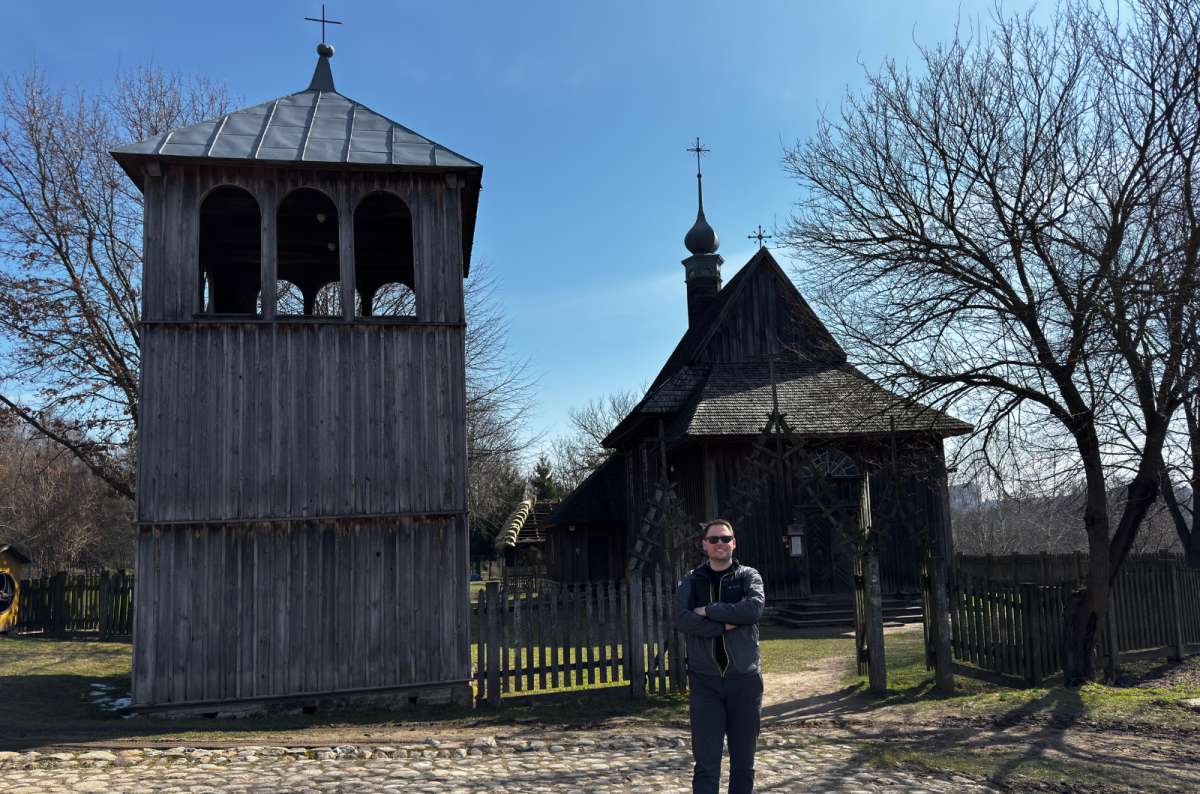
Any history buff’s dream @ Lublin open-air museum
The Village Museum is hands down the largest open-air museum I’ve ever visited. Expect to walk at least 5 km during your visit, and even more if, like me, you want to see everything. That said, you can also stroll through at your own pace, soaking in the unique atmosphere and exhibits without any rush.
It’s super easy to navigate. You get a foolproof map at the entrance, then simply follow the numbered route as the museum guides you through different epochs, village houses from various regions of Poland, and changing eras.
The grounds are neatly divided into zones with farms, townhouses, and manor houses–each clearly showing its level of wealth and detail.
Pro tip: This is by far the best attraction in Lublin for children. If I were a kid, this is exactly the place I’d want to explore.
What to expect when visiting the village museum?
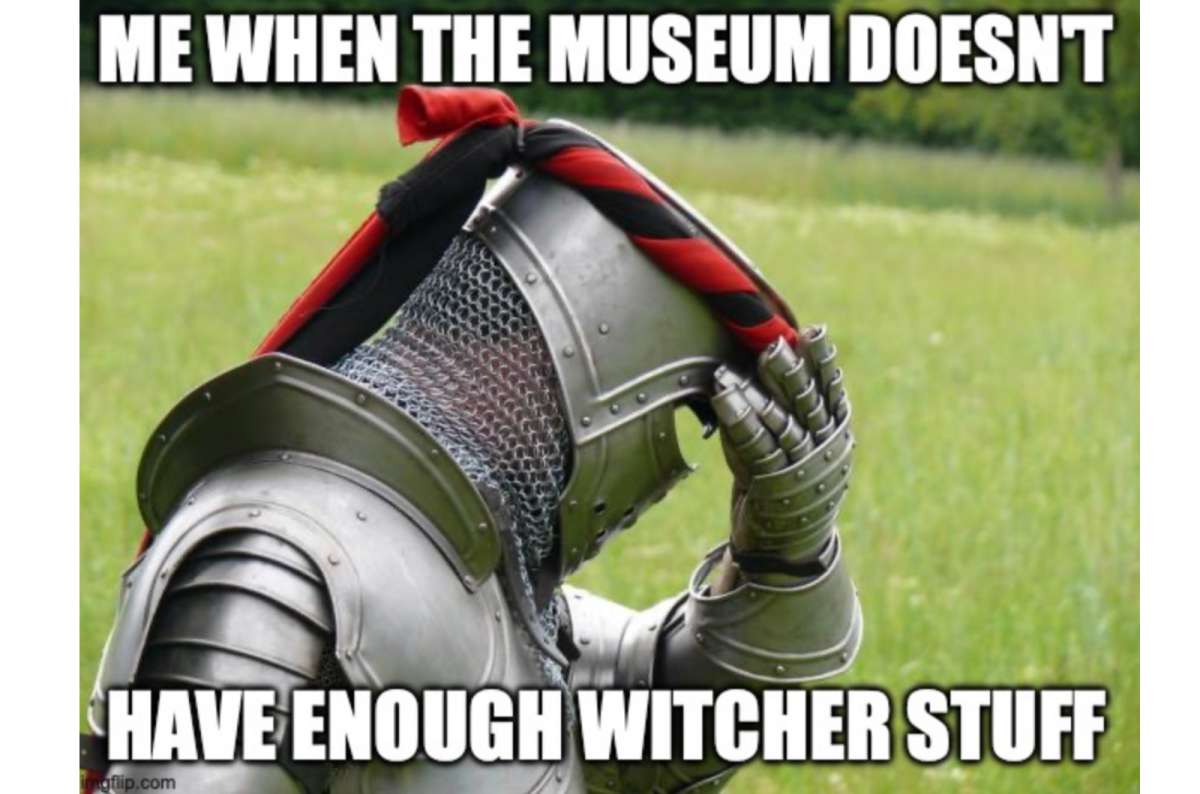
I came here mainly to see the white-painted houses—you know, because of The Witcher books, my all-time favorite. But I got even more than I expected.
The museum cleverly recreates other regions of Poland, like the Tatra Mountains or the Vistula River, and also organizes exhibits around themes such as trading, farming, fishing, and hunting.
Don’t miss out: walk down to the lake for a completely different perspective of the village.
In the end, we spent over two hours here and walked at least 5–6 km. I highly recommend visiting on a sunny day–the contrasts are more striking, and there’s much less mud on the paths.
3. Lublin Castle
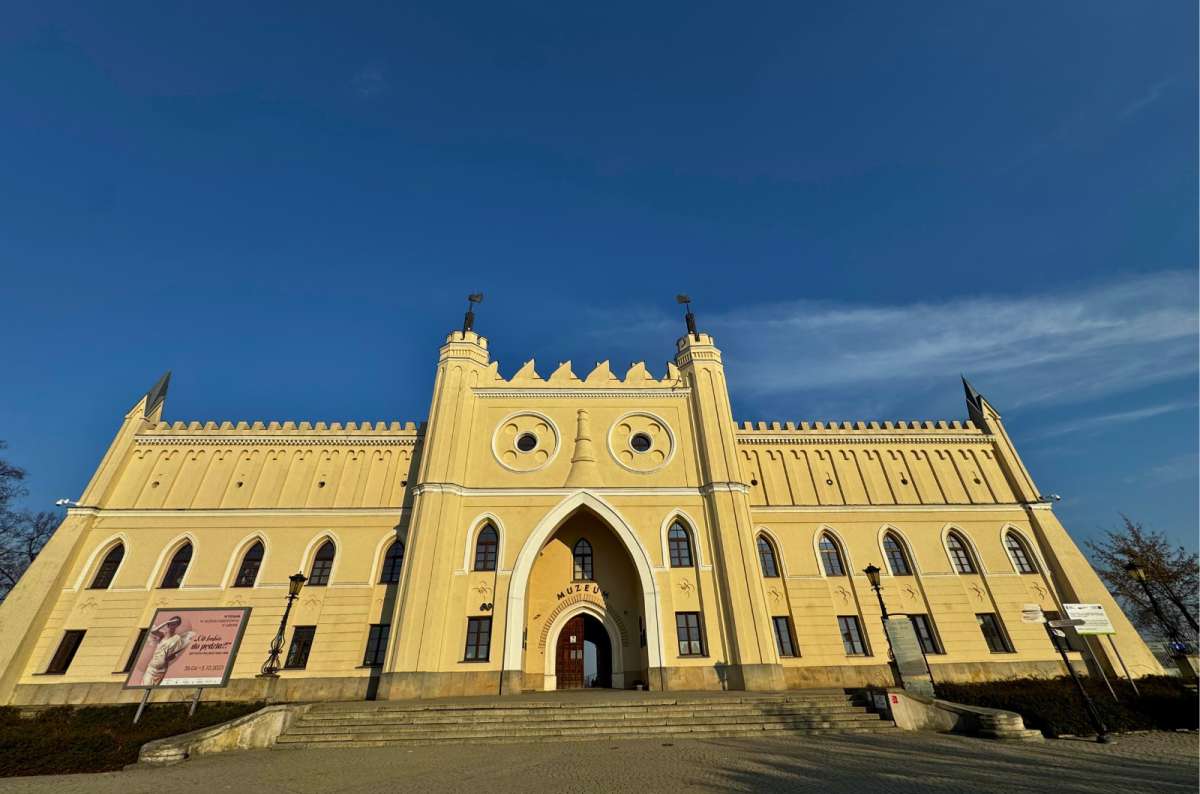
The Lublin castle is unique in many ways
Practical info:
- Opening hours: 9 am–5 pm
- Price: combined tickets for all three museums are 40 zł.
The present castle was rebuilt in a mix of styles in 1824, with Neo-Gothic being the most visible–and honestly, I find it one of the prettiest architectural styles. Some critics say it doesn’t really fit with the medieval and Renaissance style of the Old Town, and I agree. But who cares? It’s still beautiful.
Lublin Castle also houses a branch of the National Museum, which showcases important artifacts and artworks.
Pro tip: If you’re not into history, you can simply wander around the castle square, take photos at the viewpoints, and you’re good to go. It’s honestly more interesting from the outside than the inside.
What to expect inside Lublin Castle?
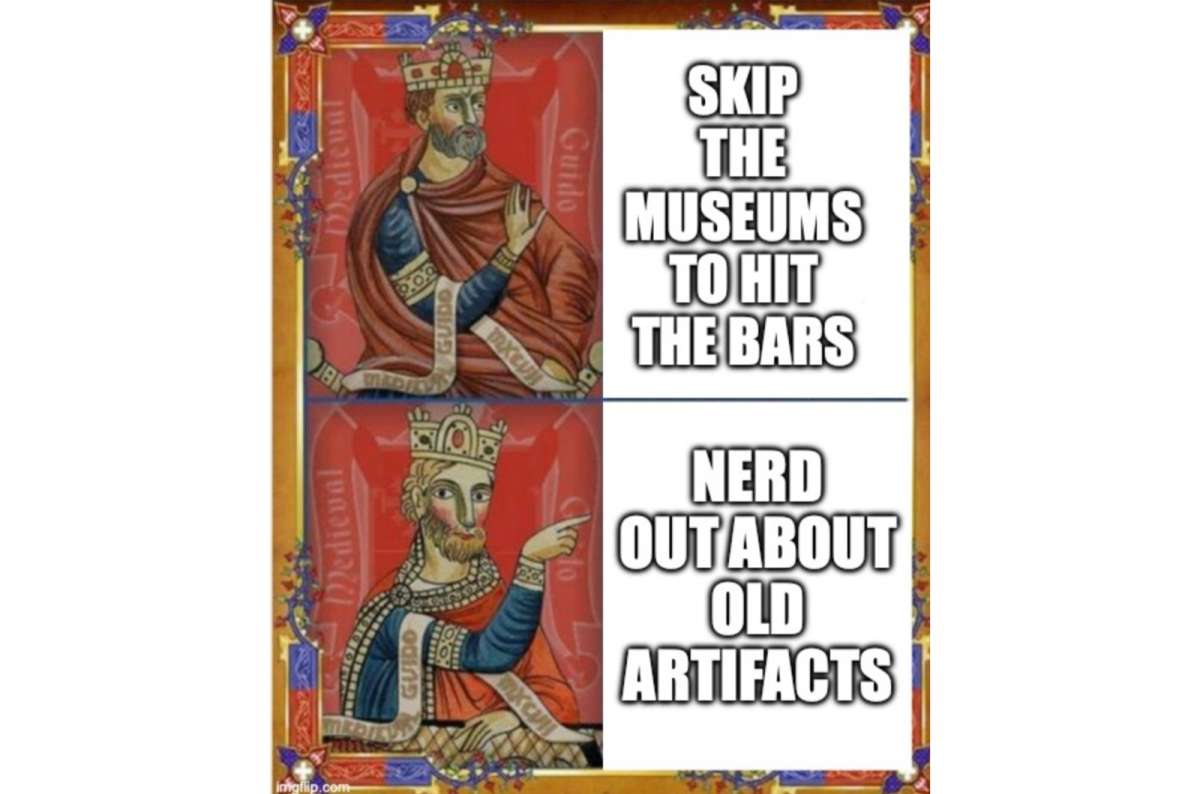
At the entrance, you can buy tickets for the three museums individually or a combined ticket for 40 zł (you save about 5 zł). It’s rarely crowded, so you can decide on the spot. The exhibits offer a fascinating insight into Lublin’s history through displays and artifacts.
Archaeology Museum of Lublin
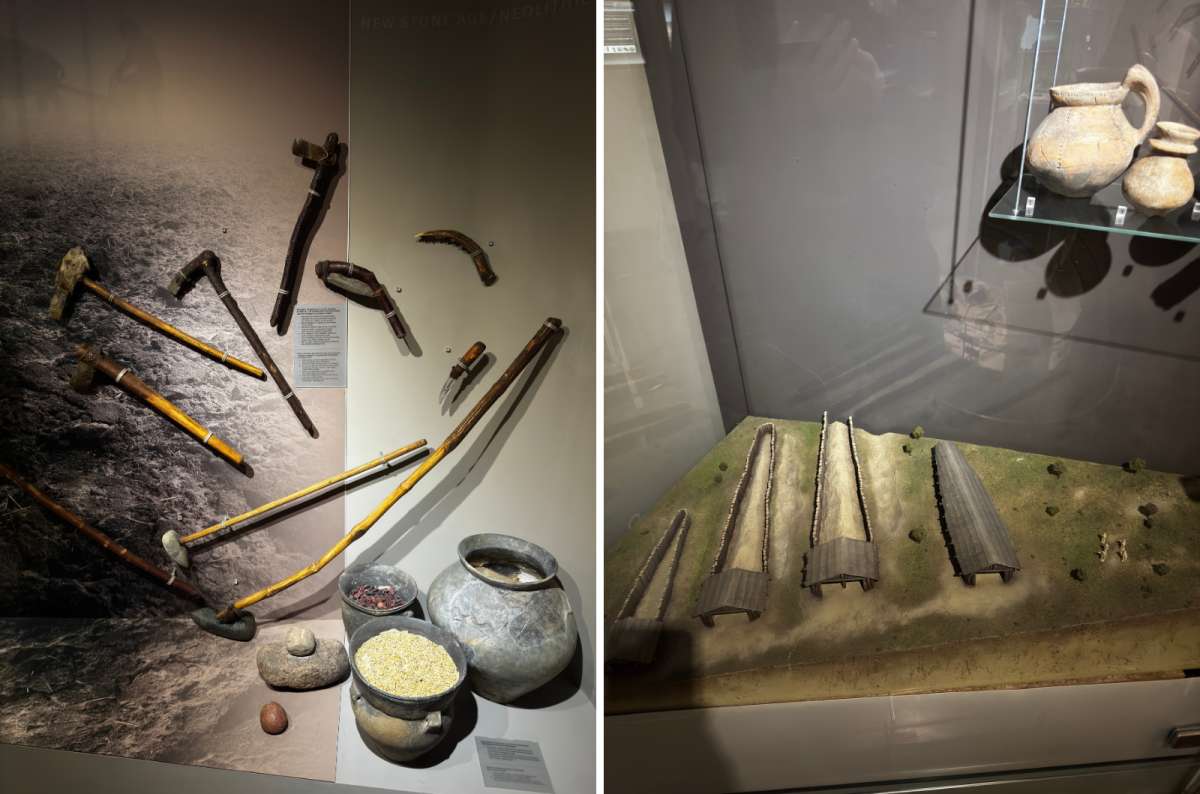
The Archaeology Museum of Lublin is an absolute must-visit if you enjoy history
The first stop is the archaeology museum, which I really enjoyed. Usually, I am the one doing archaeology stuff focused on prehistory and the Stone Age, and this museum caught my attention.
It focuses heavily on the Stone Age in Poland, with exhibits covering important historical periods up to more recent times. It’s interactive and explains the history of Lublin and the local people really well. For me, this was the best part of the castle.
The museum continues with a gallery, which is decent, and it hosts some paintings by Dutch and German masters.
Lublin Castle Chapel
The Chapel of the Holy Trinity is the oldest part of the castle. It’s small but decorated with beautiful frescoes. It only took me about two minutes to see, but it’s worth a quick look. The Orthodox-style frescoes reminded me of the mosaics in Ravenna.
Lublin Castle Tower
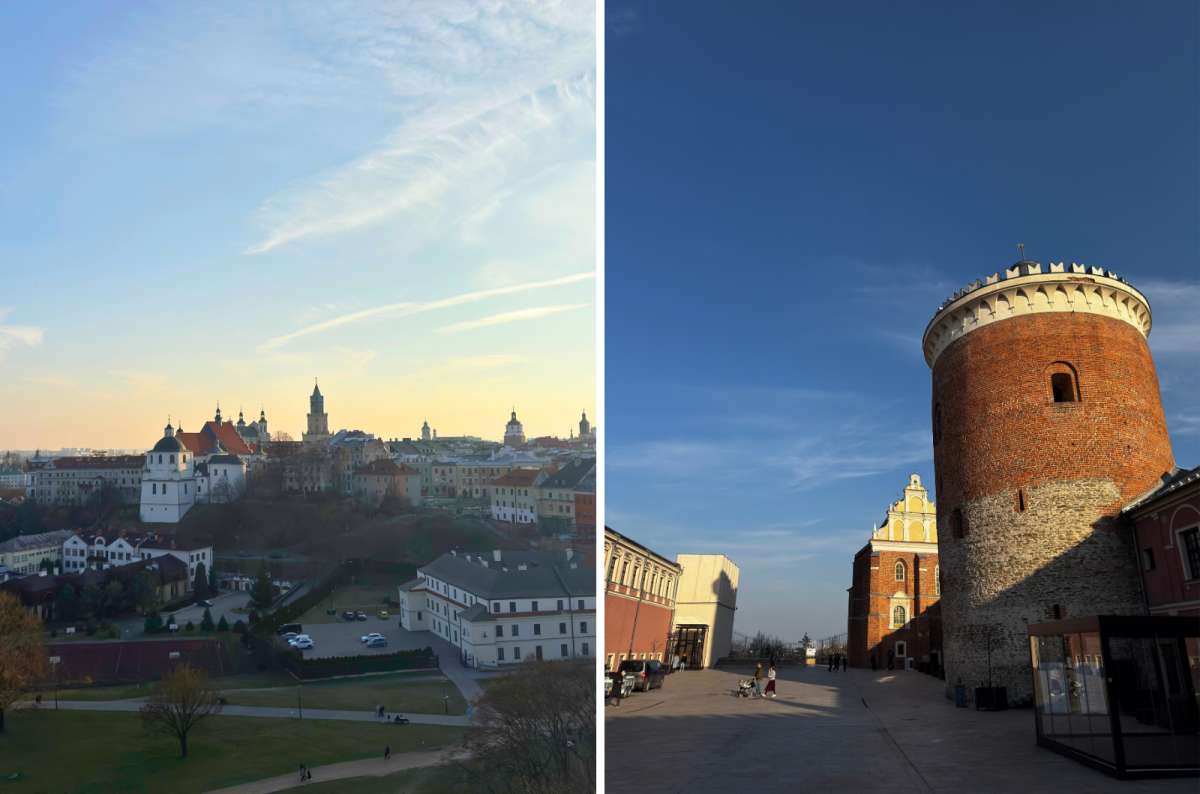
Lublin castle tower took my breath away, literally
The last stop is the castle tower, which I quickly climbed and discovered is taller than it looks. Inside, there’s a small museum about the German occupation (only in Polish, so not really worth your time), but once you get to the top, you’re rewarded with great views of Lublin’s Old Town.
Pro tip: Pay the extra ~10 zł to climb the tower. It’s worth it.
Pay extra: It's worth those 10 zł or so.
I breezed through the castle in less than an hour, which is plenty of time if you want to leave room for other attractions in Lublin.
Personally, I’d visit the castle mainly for the archaeology museum. If you’re not into that or the paintings, you could consider skipping the interior–though the architecture and chapel are definitely nice highlights.
4. Lublin's Market Square
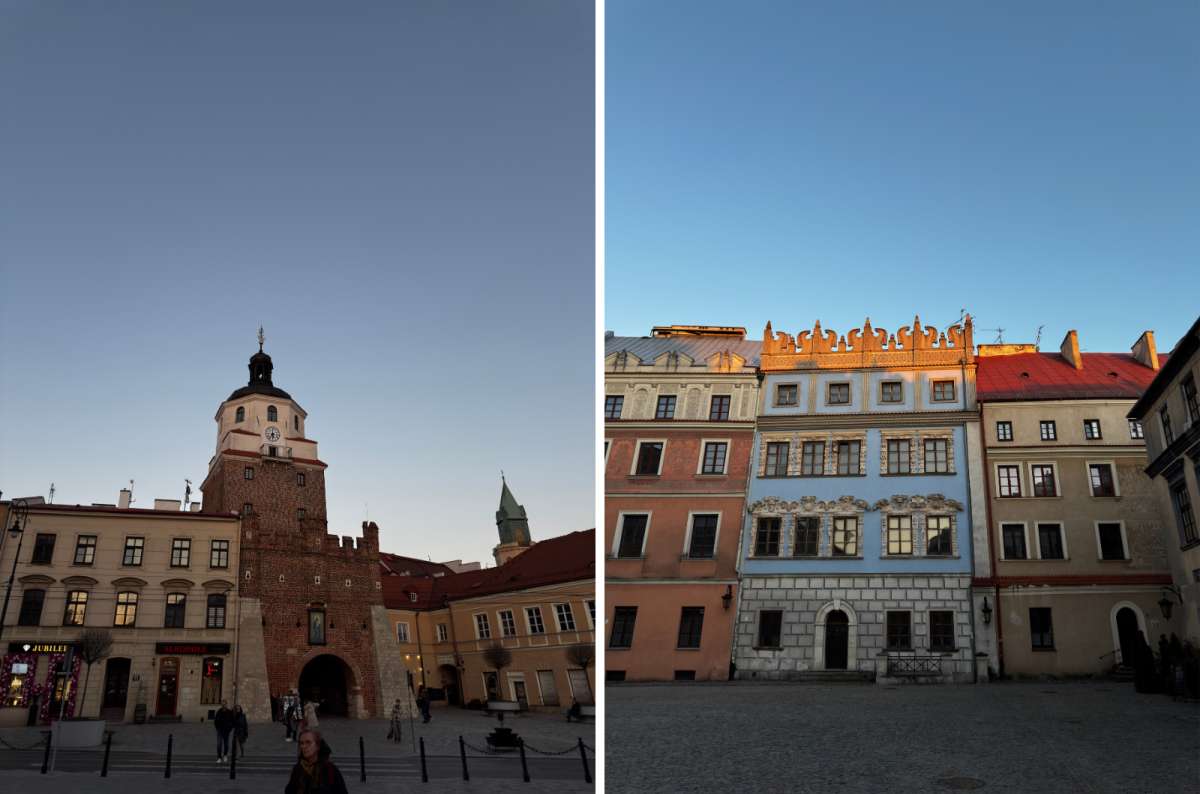
The old town market square is filled with beautiful architecture
Lublin's Market Square is the historic heart of the city and a prime example of Renaissance architecture. It’s the perfect starting point for exploring, as most of the city’s main attractions are just steps away.
The square is also home to the Crown Tribunal, a former court of appeal and one of Lublin’s most important architectural landmarks.
Be sure to look out for the Konopnica Tenement House and the Archdiocese Tower. The popular Lublin Underground Route also begins here.
Restaurant tip in Lublin
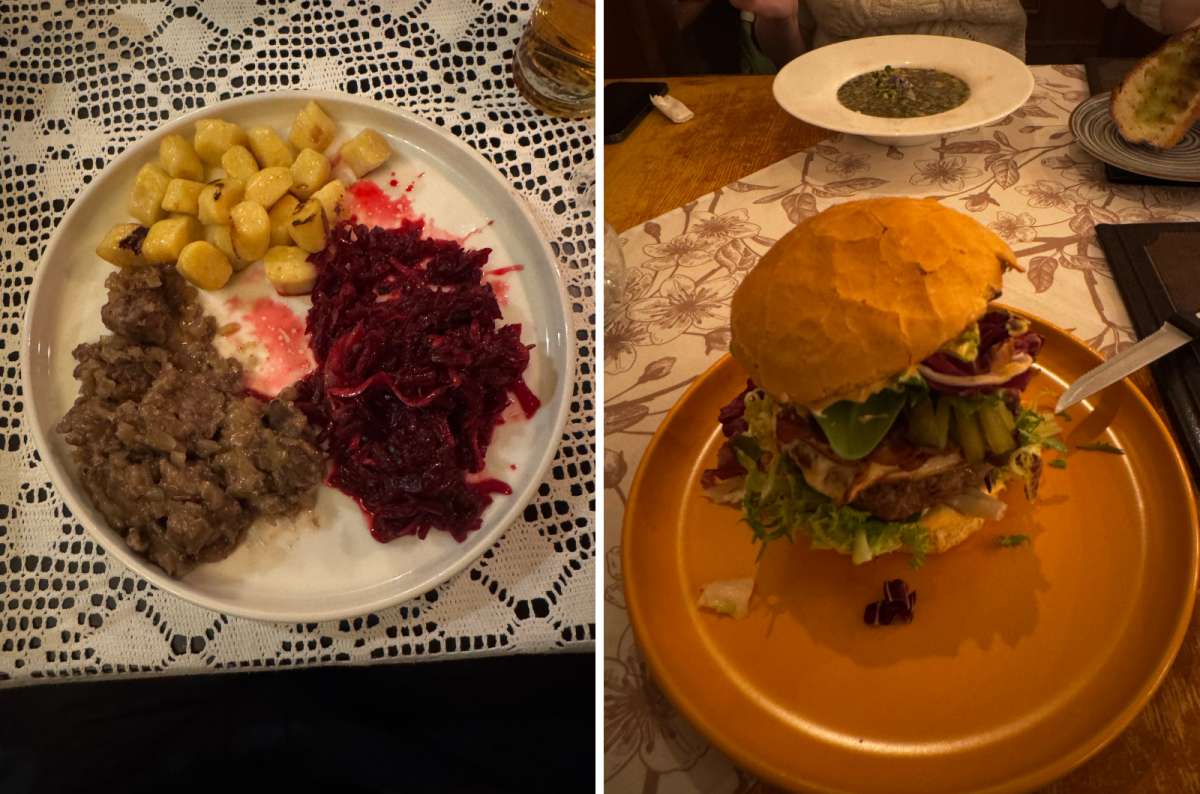
The variety of food options is wonderful
If you’re hungry, this is the best place to eat—many of the city’s top restaurants are located right on the square.
We tried Mandragora, a Jewish cuisine restaurant styled to reflect Lublin’s Jewish heritage. Having visited Israel, I’d say it didn’t quite capture the authentic feel–but the food was excellent, and the service was great.
Hotel tip in Lublin
Pro Tip: I slept in a hotel just in the Market Square, and I loved it -> check it out.
5. Center for Culture
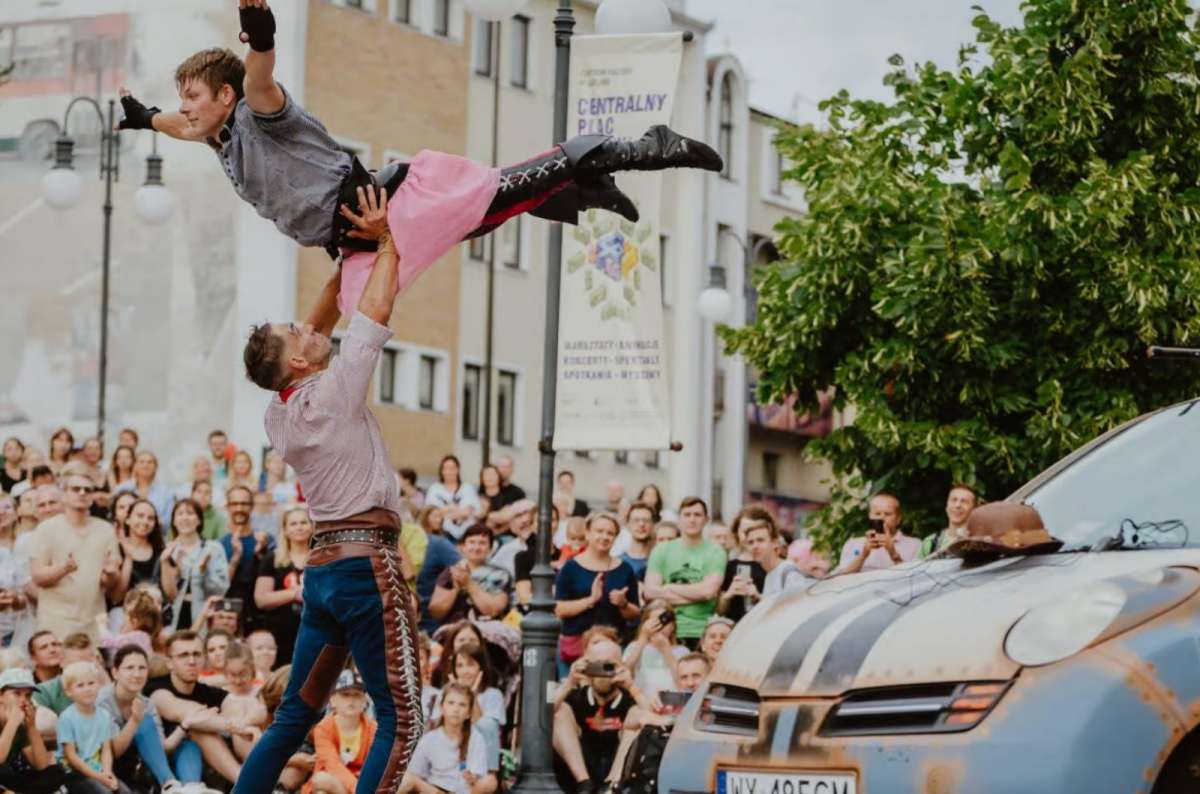
The performances are genuinely exciting
Practical info:
- Opening hours: Monday–Friday 10 am–6 pm, Saturday 3 pm–6 pm
- Price: 5 zł per movie ticket, up to 70–80 zł for various performances
The Center for Culture is a vibrant hub of artistic expression, offering exhibitions, concerts, and workshops year-round.
It also plays a key role in hosting events like Carnaval Sztukmistrzów—a renowned festival of modern circus, street art, and urban highline performances that highlight Lublin’s rich cultural scene.
6. Krakow Gate
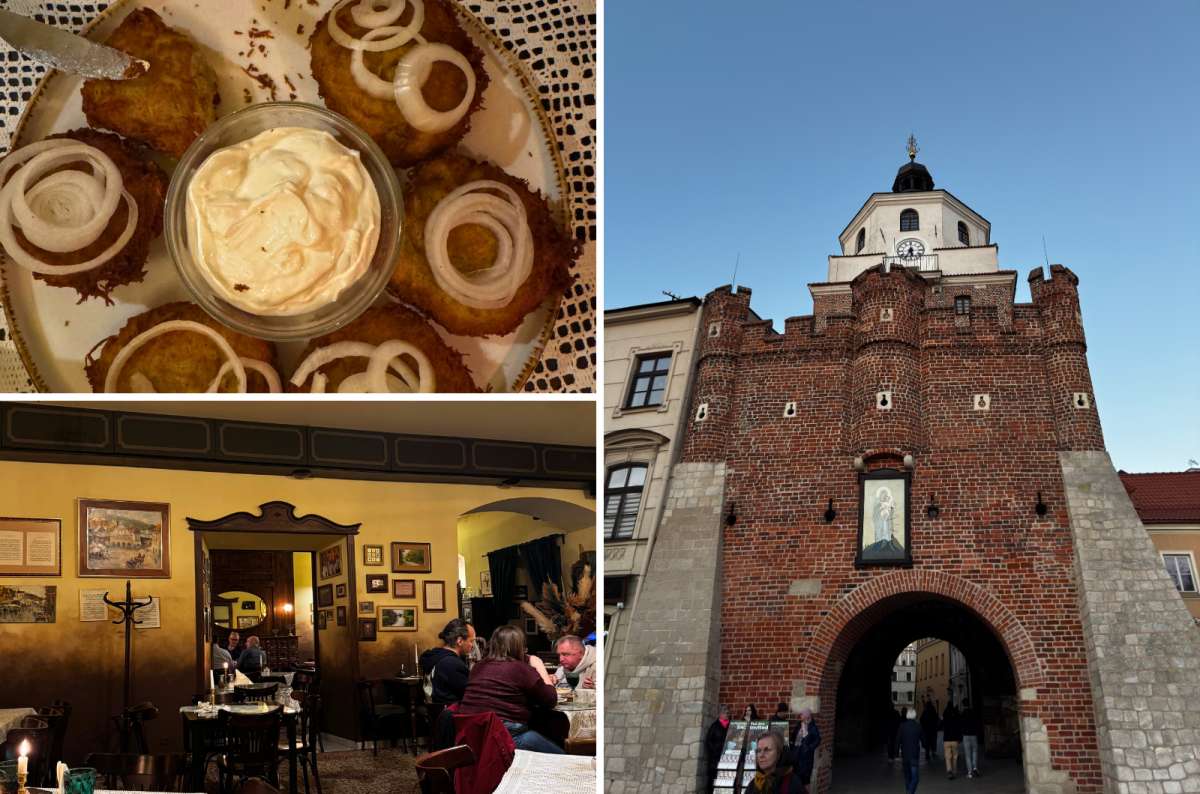
The Cracow gate has much to offer
Practical info:
- Opening hours: 10 am–5 pm, closed on Monday and Sunday
- Price: 5 zł
I’m usually not a big fan of towers, but this one really impressed me. Aside from the top three things to do in Lublin, there aren’t many indoor attractions—and this tower both looks and feels incredible.
What I loved most was the contrast: on one side you see the Old Town center, and on the other, the more modern part of the city. From here it’s only a short walk to the multimedia fountain, or a bit further to the Saxon Gardens.
After leaving Krakowska Gate, you pass through a sort of portal into a much more modern, vibrant Lublin that feels far more metropolitan. Another historic gateway worth noting is Grodzka Gate, known for its cultural and commemorative significance. It serves as a symbol of Lublin’s Jewish heritage and houses exhibitions and memorials that highlight the city’s rich history.
If you’re here for more than a day, make sure to check out the multimedia fountain in the evening, or during the day walk through Lithuanian Square toward the Saxon Gardens. And if you’re into the arts, I highly recommend a visit to the nearby cultural venues.
7. Multimedia Fountain
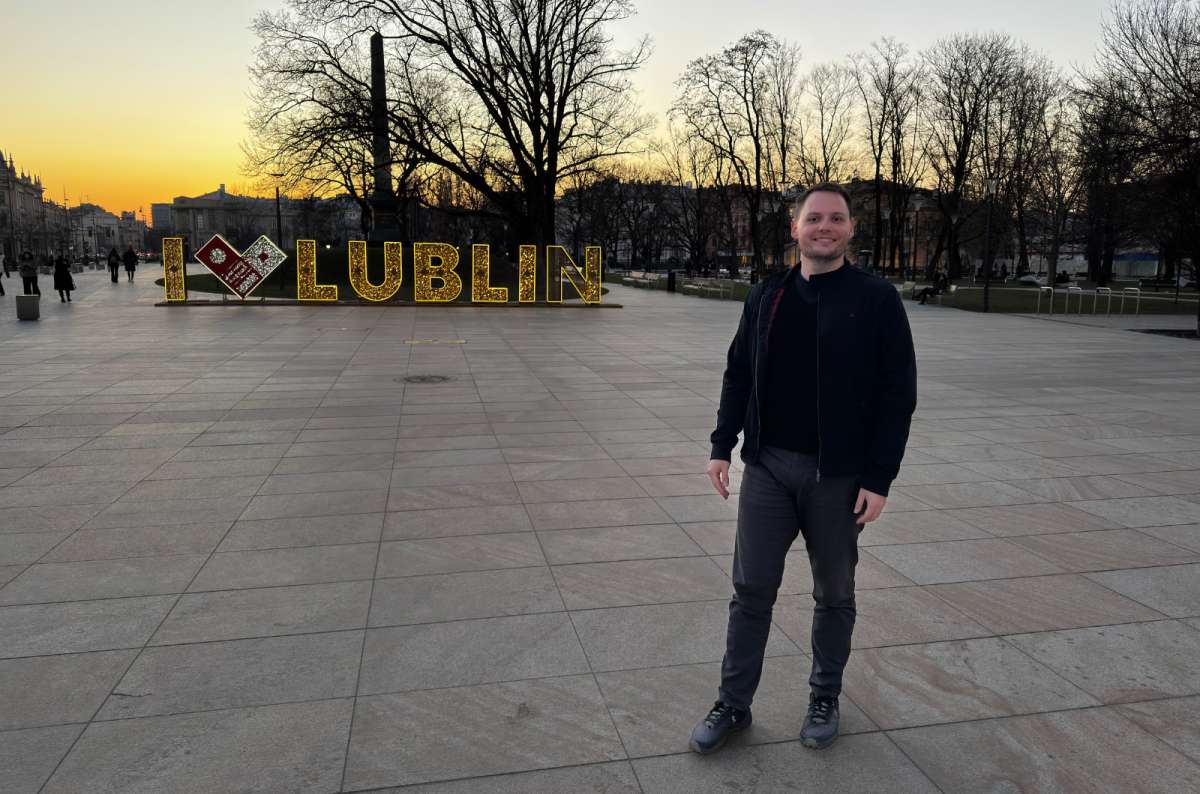
Litewski Square has this adorable sign, I couldn’t not take a picture
In the middle of Litewski Square, one of Lublin’s most popular gathering spots, you’ll find the Multimedia Fountain. It seems like it could be really interesting, but during my visit, it wasn’t operating.
If you’re in a religious mood, you can also quickly step into the Baroque Church of the Order of Friars Minor Capuchin, located nearby.
8. Bread Museum
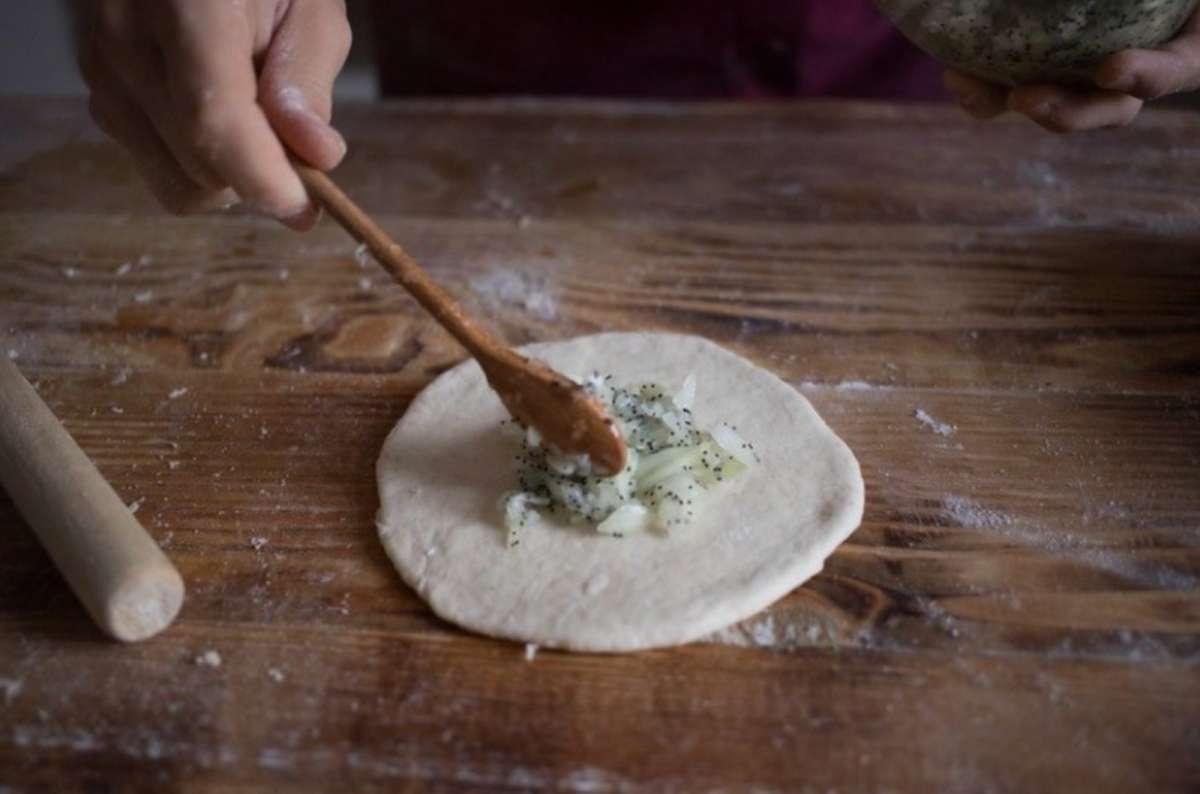
I do love a place that lets you get hands-on
Practical info:
- Opening hours: 12:15 pm–5 pm (you need a reservation on the weekends)
- Price: 36 zł
At the Bread Museum, you can learn how to bake traditional Lublin bread and discover regional pastries such as cebularz, a flatbread topped with onion and poppy seeds.
The museum is small but very hands-on, which makes it fun and memorable. You don’t just watch—you actually get to roll up your sleeves, knead dough, and taste the results fresh from the oven.
It’s also a great place to learn about local food traditions that go back centuries. If you’re traveling with kids or simply love food experiences, the Bread Museum is one of those underrated stops in Lublin that adds a personal flavor to your trip.
9. Basilica of St. John
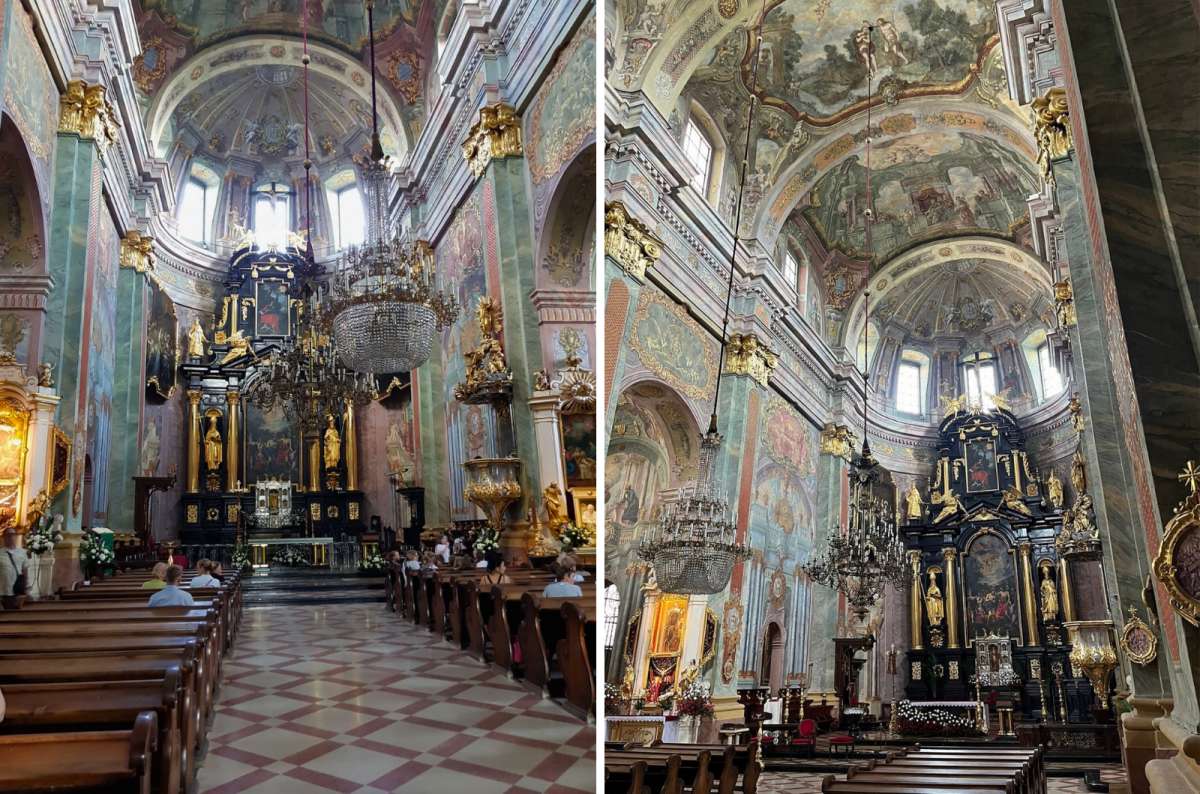
The Basilica of St. John is one of the many atmospheric experiences Lublin provides
Practical info:
- Opening hours: 10 am–4 pm (closed for sightseeing on Mondays and Sundays)
- Price: 10 zł
Finally, a big cathedral to step inside–the Basilica of St. John. It features an impressive black altar and richly colored walls that give the interior a unique atmosphere. You can also take an audio guide for more context on its history and art.
From the basilica, continue to the nearby Gothic Tower for another perspective on Lublin’s skyline and history. The combination of religious and medieval architecture makes this area particularly photogenic.
Don’t miss the chance to wander through the surrounding streets afterward–they’re full of charm and connect you to some of Lublin’s most iconic landmarks. It’s the perfect spot to slow down and soak in the city’s atmosphere.
10. Sandomierz and Kryzstopor Castle (day trip)
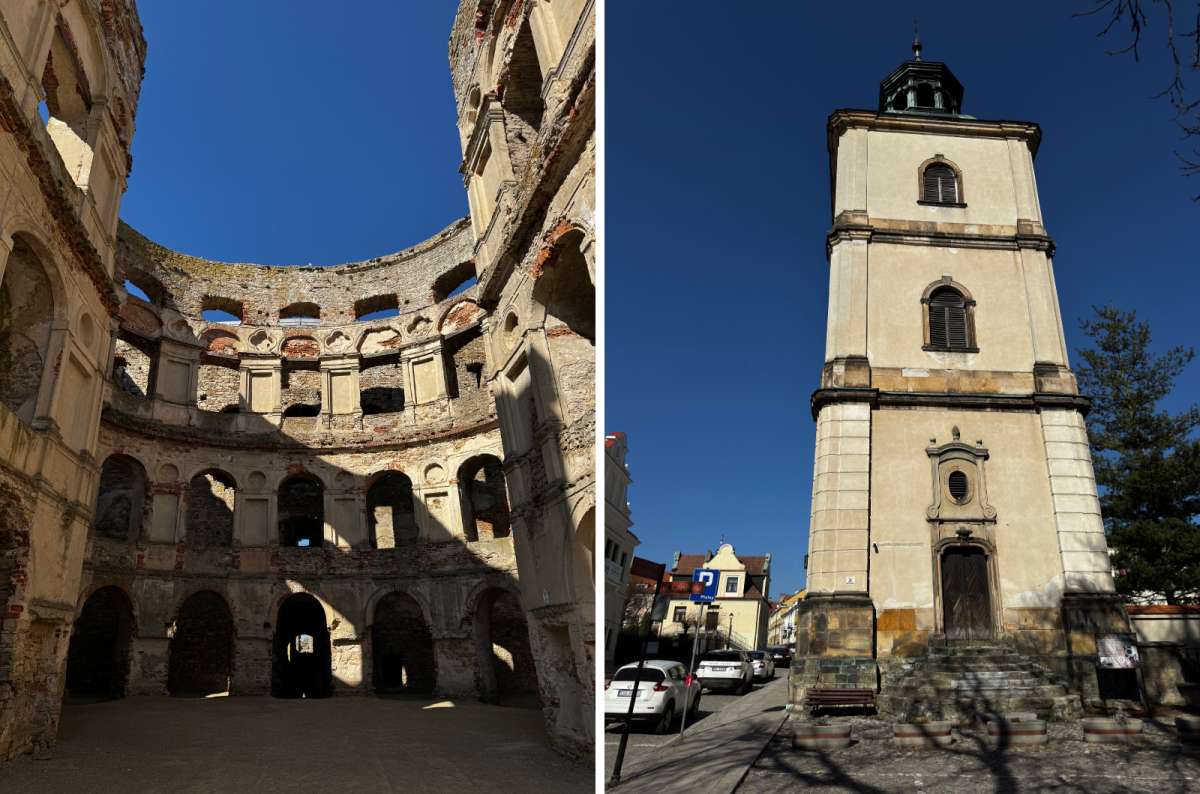
These two places have very different vibes, and yet, both are absolutely great
You can easily combine these two into a single day trip, as they are close to each other and will take roughly half a day each. I recommend starting with Krzyżtopór Castle–it’s the more famous site and tends to get busier.
Afterward, head to Sandomierz, a charming provincial town known for its traditional character and historical atmosphere.
For something unique, consider visiting Krzyżtopór Castle at night during the summer–it’s said to be haunted, which makes the experience even more intriguing.
Sandomierz–a Day trip from Lublin
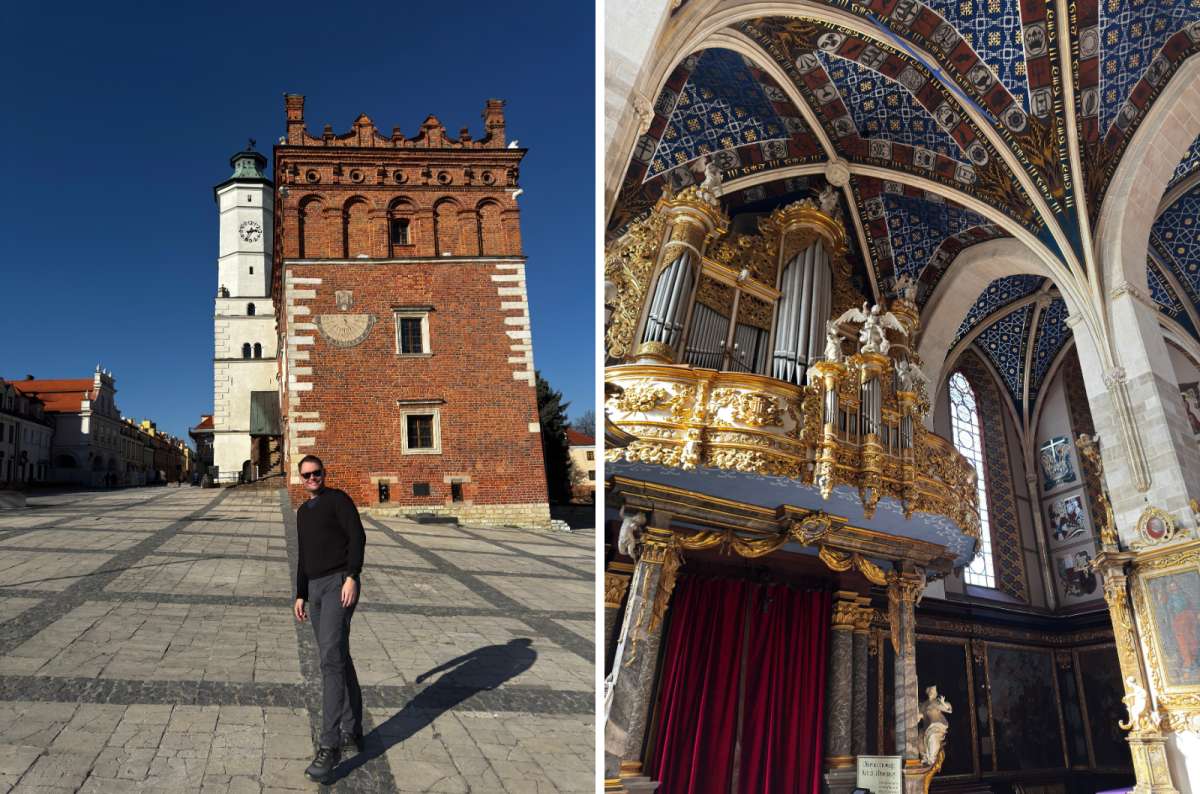
The blend of architectural styles is a part of Sandomierz’s charm
Sandomierz is one of the oldest–and once one of the most important–towns in eastern Poland.
Its historic market square is the town’s centerpiece, blending Gothic and Renaissance architecture in a beautifully preserved setting. Surrounded by notable buildings, the square serves as the perfect starting point for sightseeing and cultural activities.
The sheer number of places to visit in Sandomierz is mind-blowing, especially considering its relatively small size today.
What to do in Sandomierz
- Historical center and Rathaus–One of the best preserved Renaissance town centers in Poland. It's very similar to haseatic cities.
- Sadomierz Cathedral (Basilica of St. Mary)–Gothic cathedral placed on the hill with some of the best views from below. It's worth visiting from the inside. It's cheap, it's nice to see, and there is an English audioguide (13 zł for the guide). Inside, you can see a mix of Byzantine and Orthodox styles.
- The Castle of Sandomierz–it‘s mostly an archaeology exhibition. Though it's a very nice castle. GPT
- Opatowska Gate–There is this ropewalker, which I found physically very interesting. As he is really balancing and has one point of contact with rope.
- Eye of the Needle–for some reason famous picture spot.
Krzystopor castle
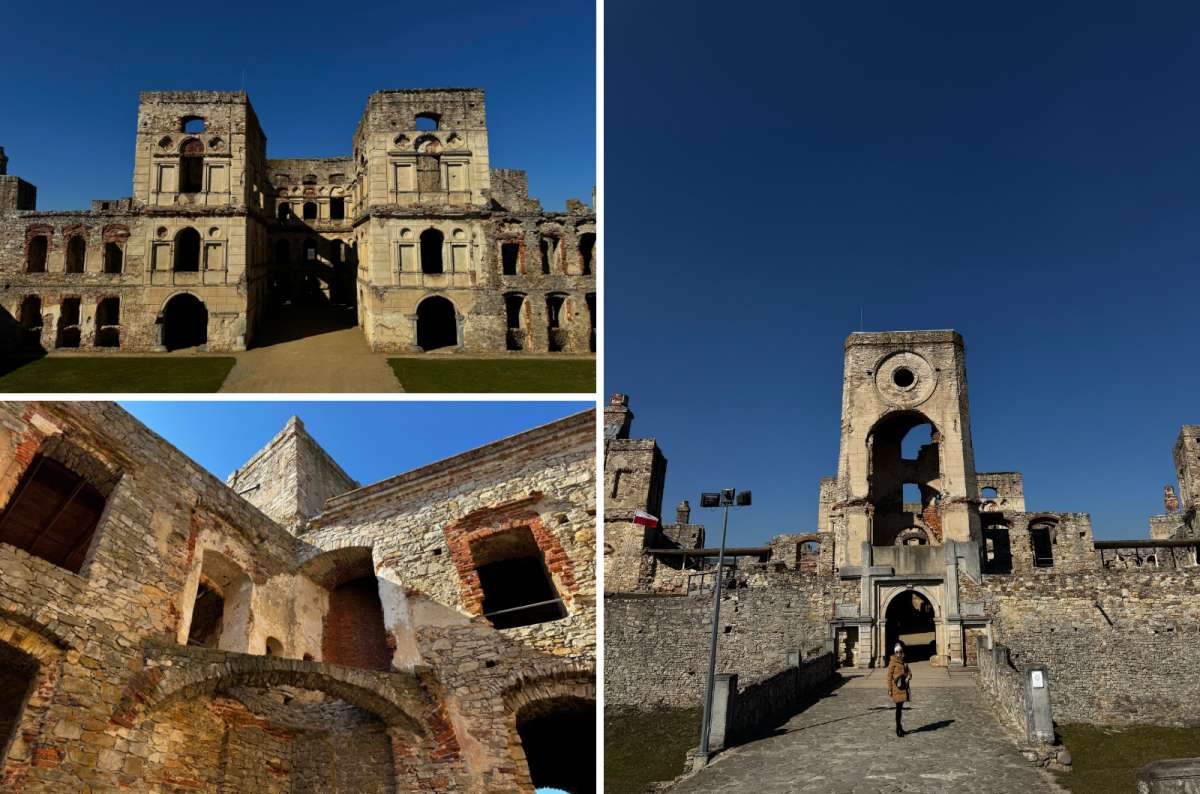
Kryztopor castle takes you back entire centuries
Practical info:
- Opening hours: daily 8 am–6 pm
- Price: One ticket is 22 zł
- Parking: There are two parking lots on site, and parking was absolutely no problem.
Krzysztopór was the second reason I visited the Lublin region, and hands down, I consider it one of the best things to do in eastern Poland.
These are the famous ruins of a 17th-century castle–the largest in Poland for about two years before it was destroyed by the Swedish. Its tragic destiny is still visible in the ruins today.
The castle has three main routes: Floor 0 and -1, Floor 2, and the ramparts. The site is immense but very easy to navigate.
Pro tip: This place is perfect for Instagram shots–during our weekday morning visit, it was almost empty. It felt so different from anything else, and I don’t think you can find ruins of this size anywhere in the world. It’s like the Machu Picchu of European Renaissance castles.
During the day, it’s entirely self-guided, so you won’t get much historical context. It’s more of an atmospheric experience–walking through the ruins feels almost artistic rather than educational.
For me, it was like being a kid again, exploring giant, overgrown ruins. Some of the figurines even give it a slightly creepy, haunted vibe.
Visiting Krzysztopór takes about 60–120 minutes. If you get the chance, the night tours (starting April 1 each year)must be something truly special.
11. A day trip from Lublin to Kazimierz Dolny
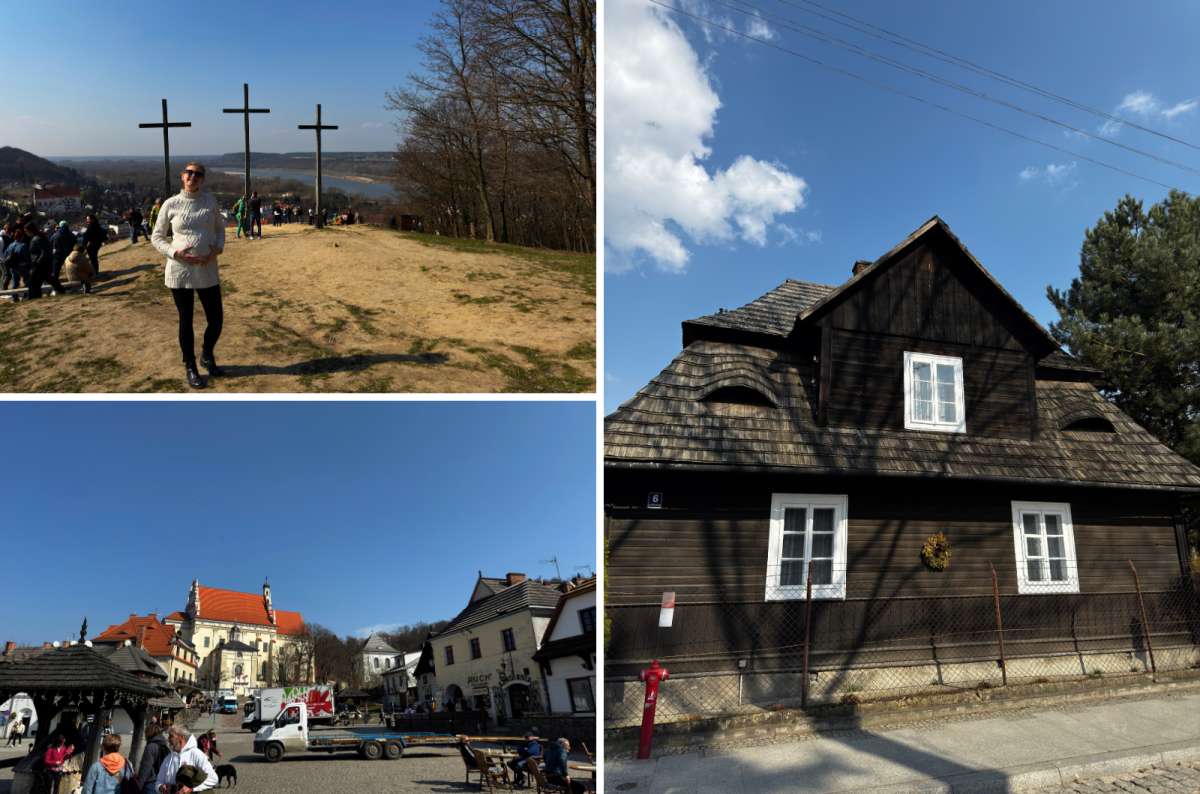
The medieval vibe in question... @ Kazimierz Dolny
Kazimierz Dolny is located within easy reach of both Lublin and Kraków, making it a perfect day trip from either city–and more than worth a visit. I’d easily rank it among the best things to do in eastern Poland.
Named after the great Polish king Kazimierz the Great, the town has a strong medieval atmosphere with its scenic ruins, historic churches, and panoramic viewpoints.
Dating back to the 13th and 14th centuries, Kazimierz Dolny’s heart is its market square, surrounded by beautifully preserved buildings and buzzing with cultural activities, making it the ideal starting point for sightseeing.
Practical info:
- Parking: is easy and cheap (20 zł per day)
- There are plenty of restaurants with local specialities, and attractions are either free or reasonably priced.
What to do in Kazimierz Dolny
- Kazimierz Dolny Castle–Its ruins with great views of Vistula river, but very little to do inside. Don't forget to scale the tower.
- Market square–The historic market square is the heart of the old town, surrounded by schindel roofs, old wooden houses, churches, and nice squares. It's a central point for sightseeing and cultural activities.
- Vistula River Bank–one of the best short walks in Poland, with all the views + Vistula river here looks stunning
- Three Crosses viewpoint–Gives you a great view of the city, castle and riverbanks. One of the best placed views in Poland
- Root gorges–the whole town is surrounded by old “root” gorges, which for some is the main reason to visit
- The Janowiec Castle–another closeby castle, with great views over the river and well worth a visit itself.
One day in Lublin Itinerary
This is how you should do Lublin in Poland if you only have one day to explore. These stops are the very best of what to see in Lublin, put in an order that makes sense both practically, and for the sake of your cultural and historical learning. Take it from me–the self-proclaimed champion of planning.
Stop 1. Majdanek Concentration Camp
Stop 2. Open air museum Lublin
Stop 3. Lublin Castle
Stop 4. Oldtown square Lublin
Stop 5. Krakow gate + Basilica of st John
Stop 6. Old town + Multimedia Fountain
Stop 7. Lublin Cultural Center
2-3 days in Lublin Itinerary
If you’re staying longer, consider a day trip to one of the nearby cities, where you’ll find beautiful different architecture and stunning views year-round. It’s the perfect way to balance Lublin’s urban attractions with its rural and medieval setting.
Conclusion–Is Lublin worth visiting?
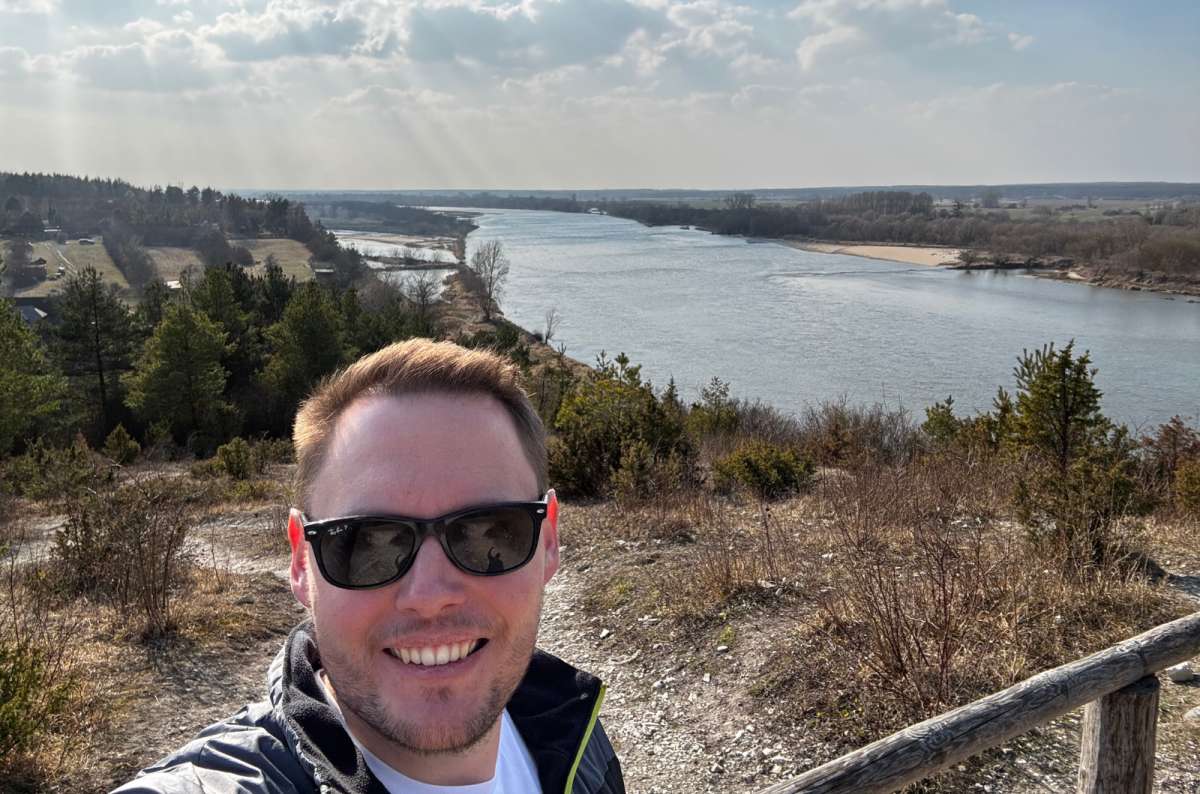
YES! Yes, it is absolutely worth a visit
Lublin and the Lublin region were an unexpected ace of my visit to Poland. I didn’t know what to expect yet and was not sure whether it was going to be good or not. After spending over a week in eastern Poland, it's one of the best regions in Europe to learn about Slavic Culture, the horrors of the Second World War and trying out new “eastern cuisine”. If you plan to visit Poland, please don't skip this region.
I hope you enjoy your visit to Lublin and find this guide helpful.
Sometimes, all you need to do is take the first step... I've filtered out the best hotels in Lublin for you
Save it for yourself to come back to later, or share with your friends on social media!
This post contains affiliate links. If you make a booking through one of my links, I may earn a small commission—at no additional cost to you. Thank you for your support!




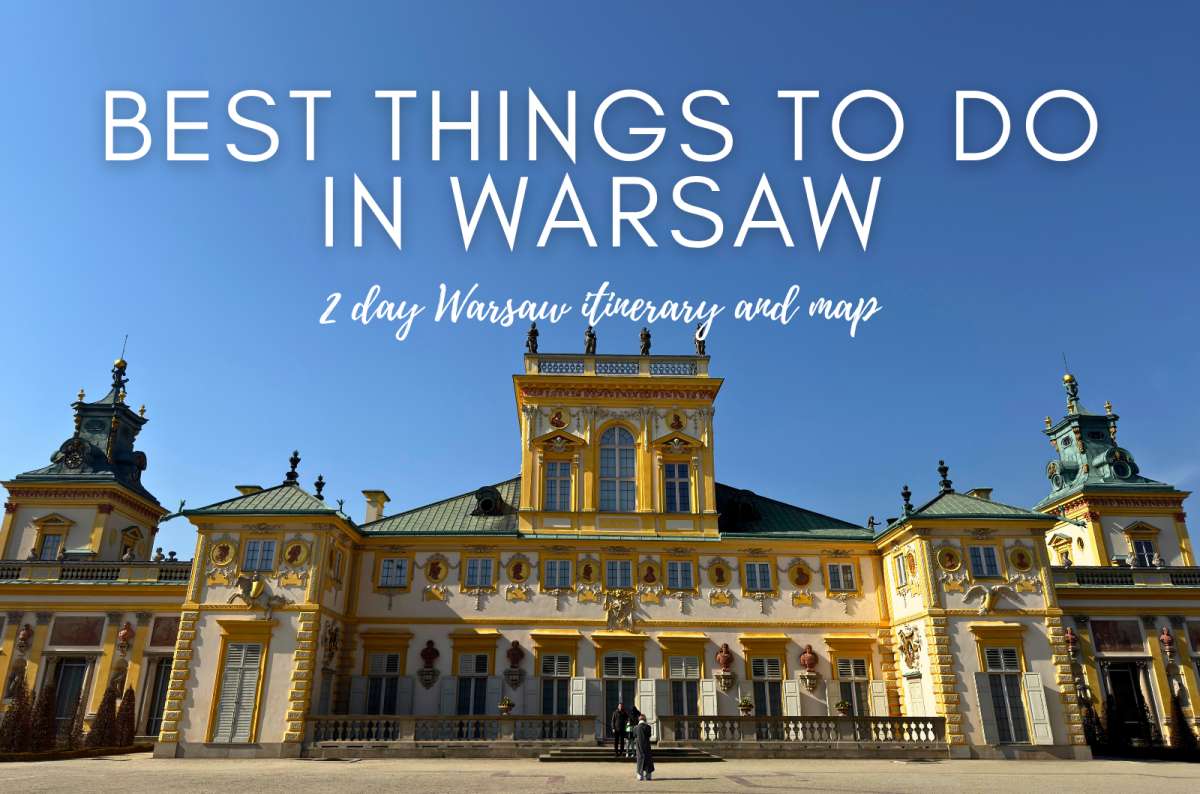
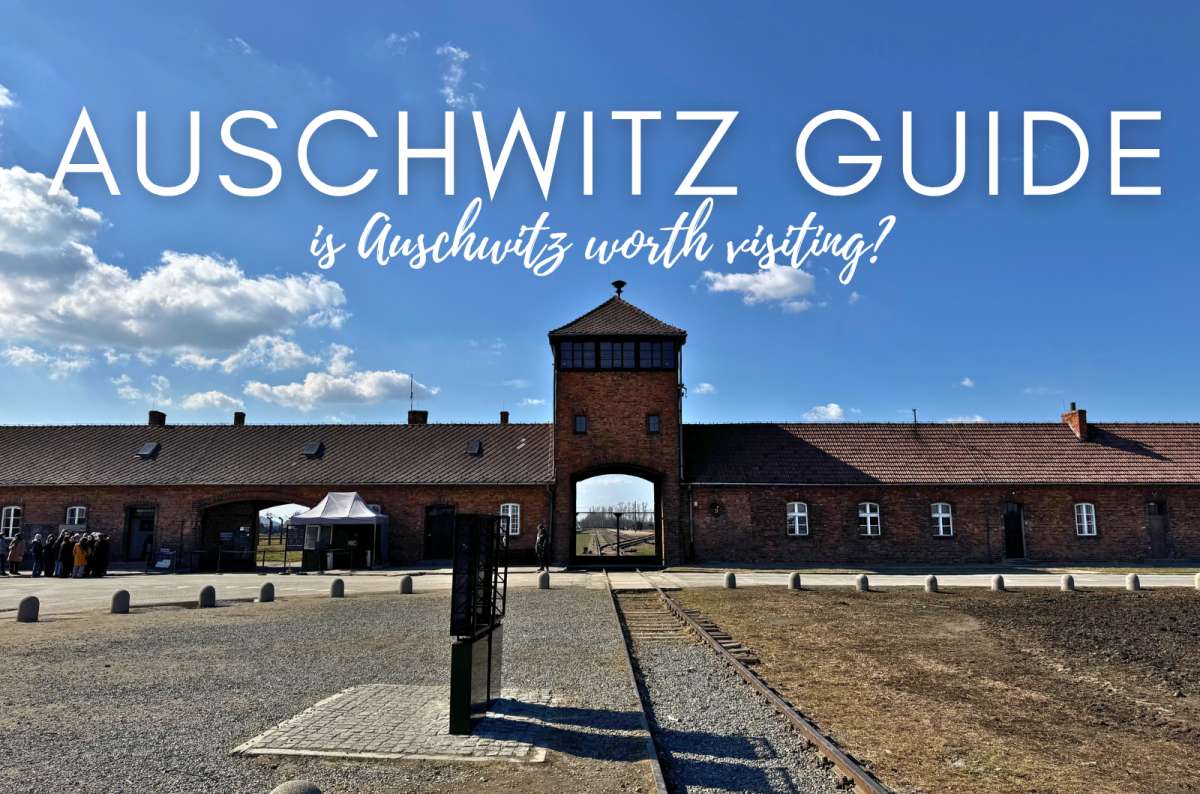
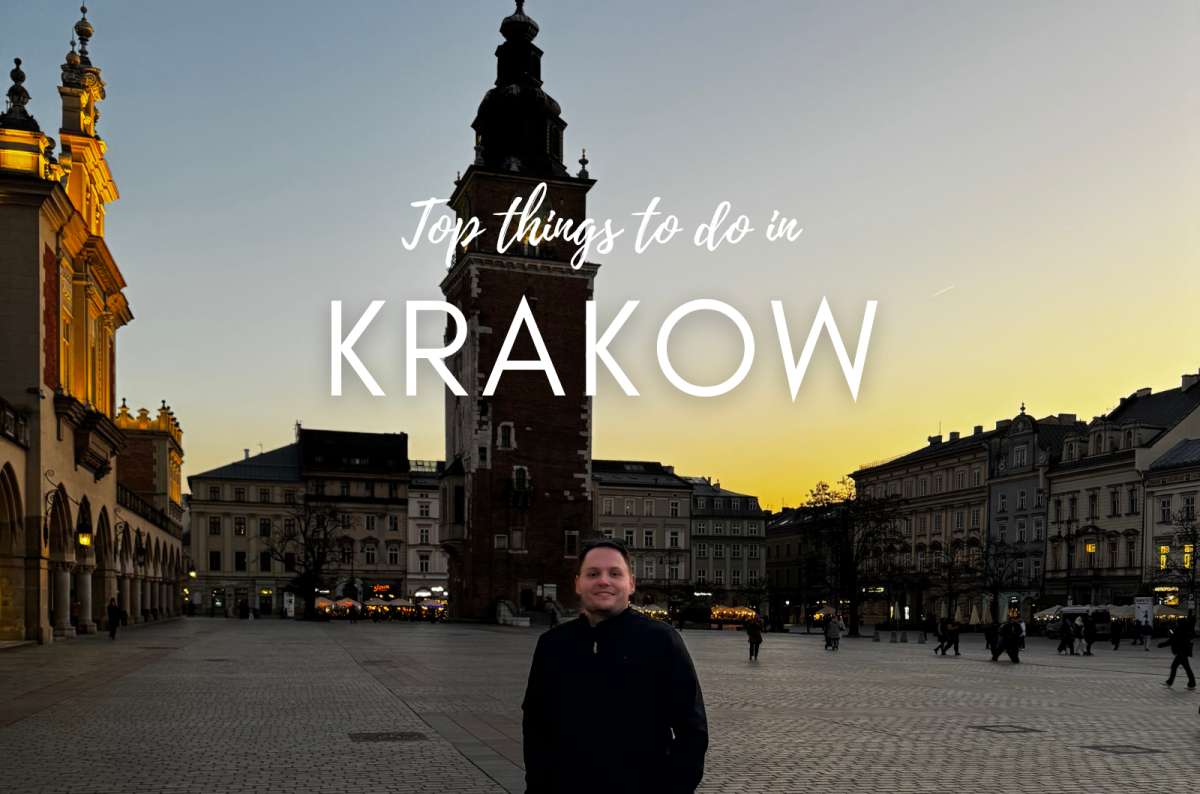



Comments | Thoughts? Give us a shout!